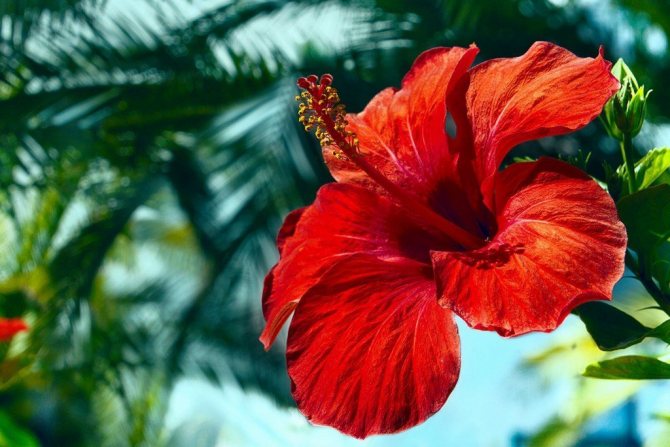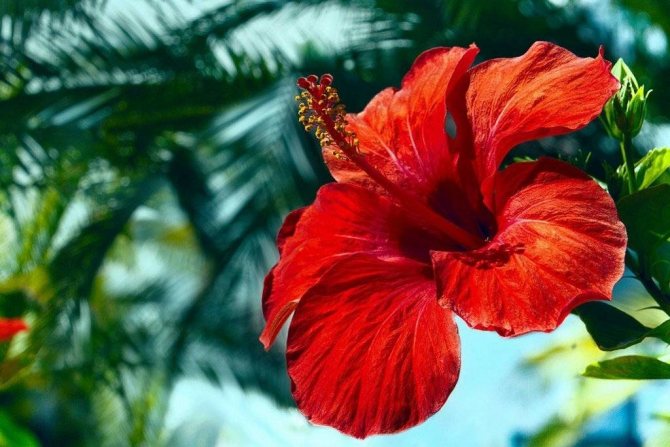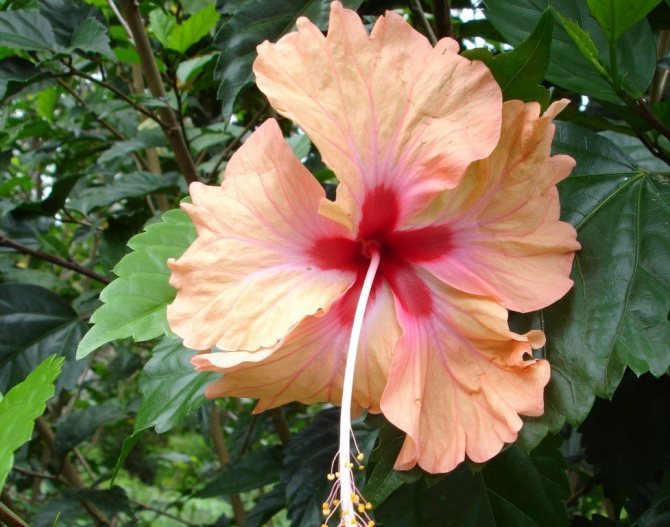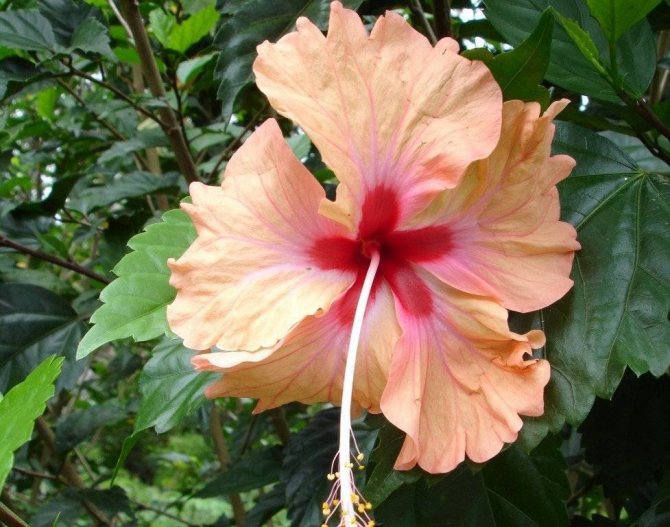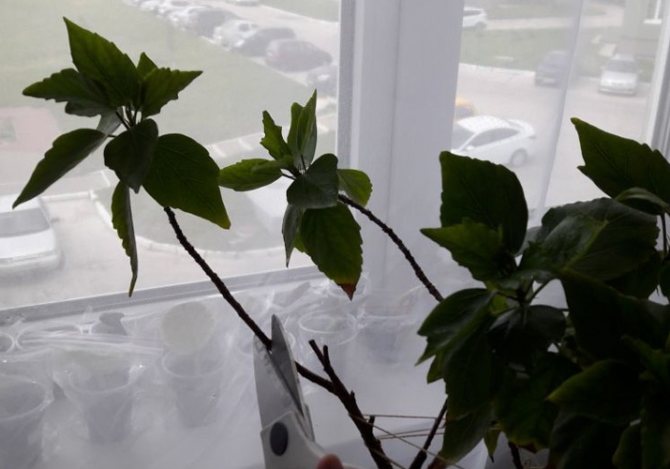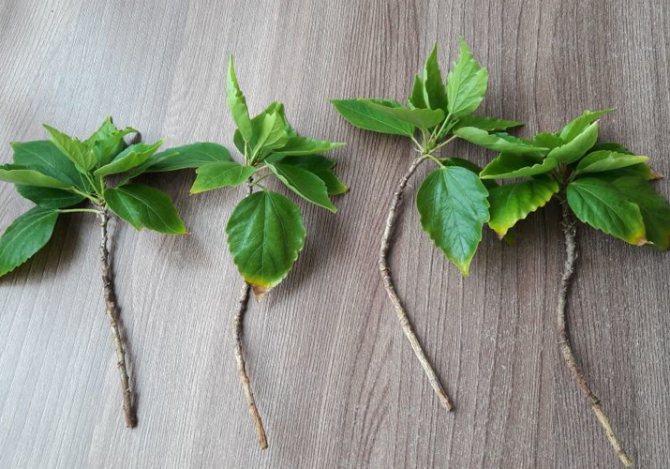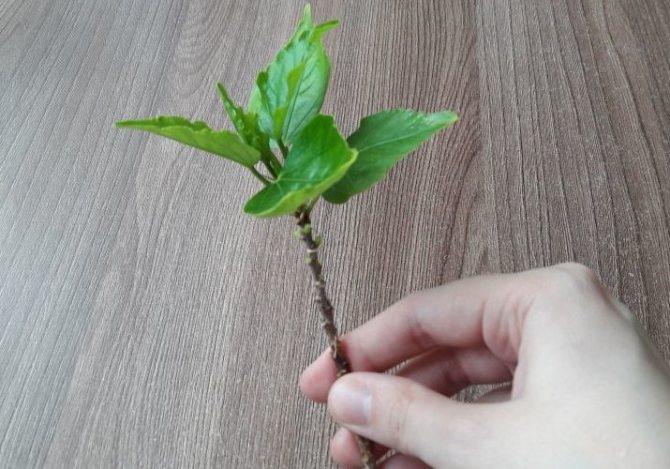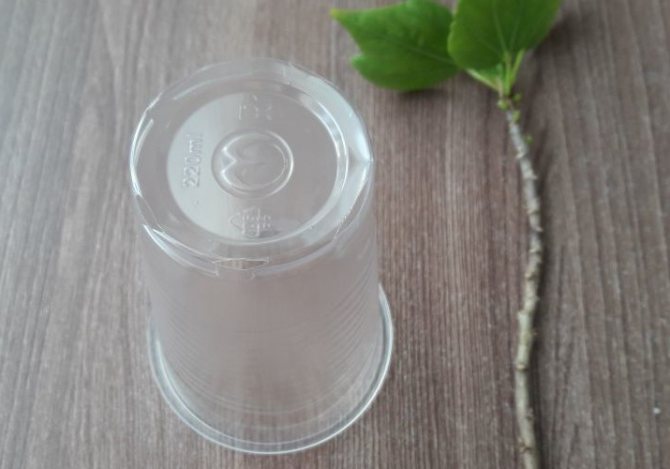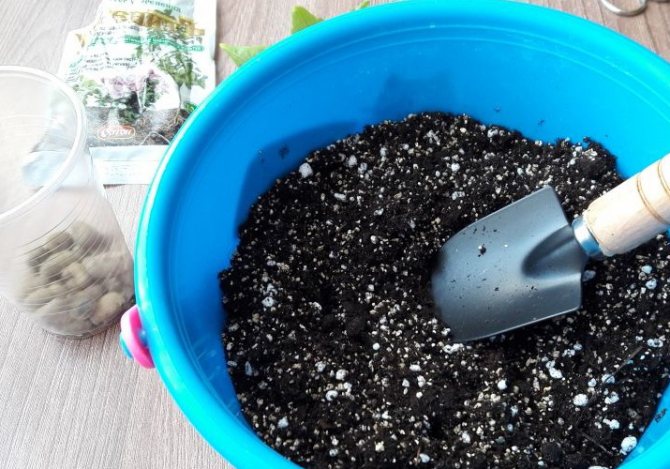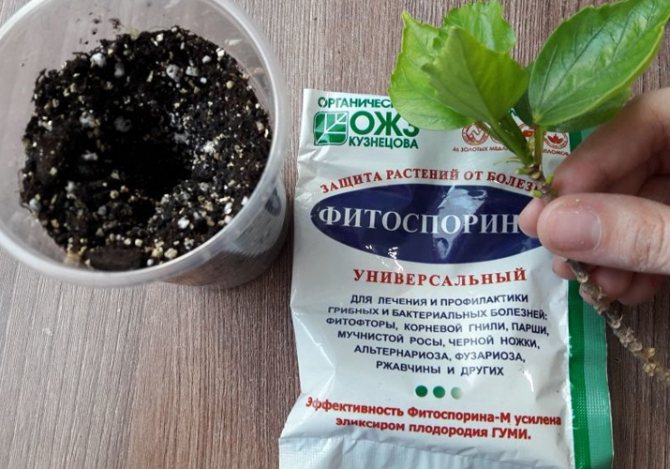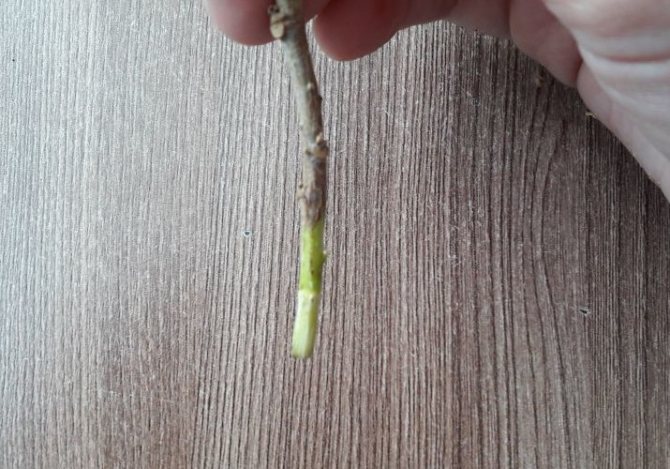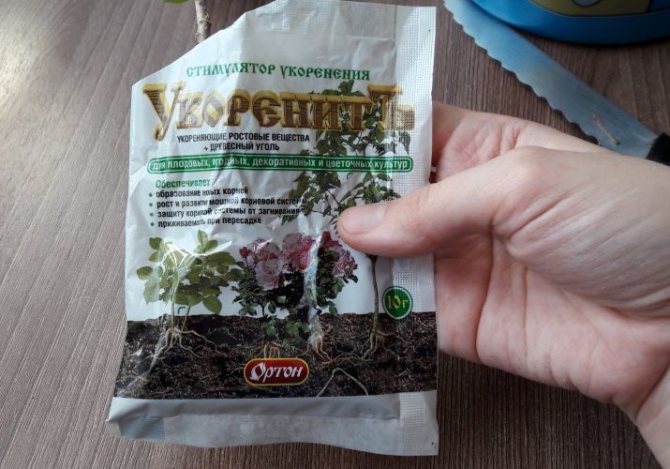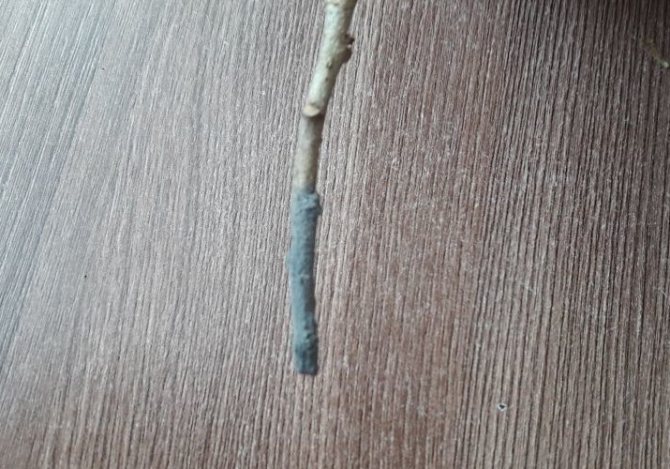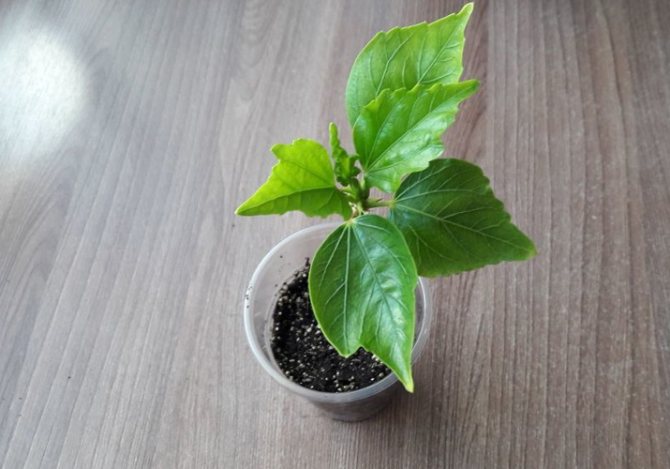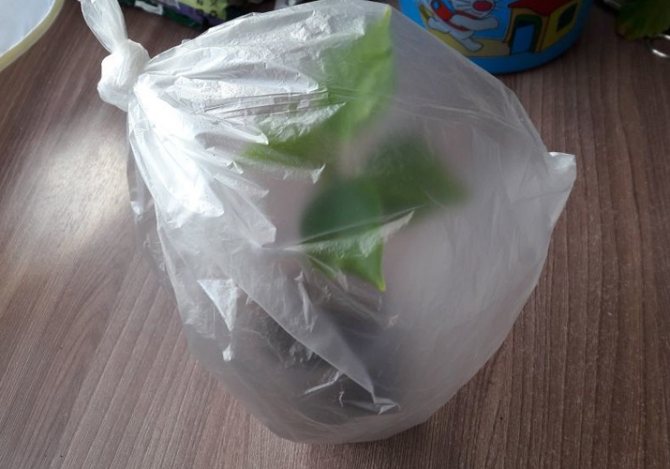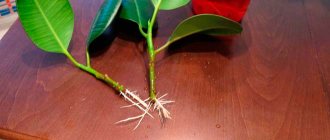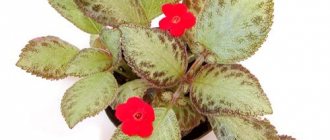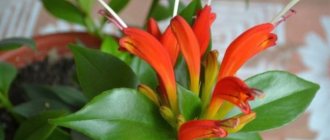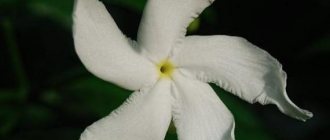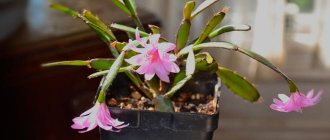The beauty of hibiscus always delights, and the splendor of the colors is pleasing to the eye. The Chinese rose, as this plant is also called, is found in almost every home. Under natural conditions, hibiscus reproduces by its own seeds. At home, most often, this process is carried out in a vegetative way using cuttings.
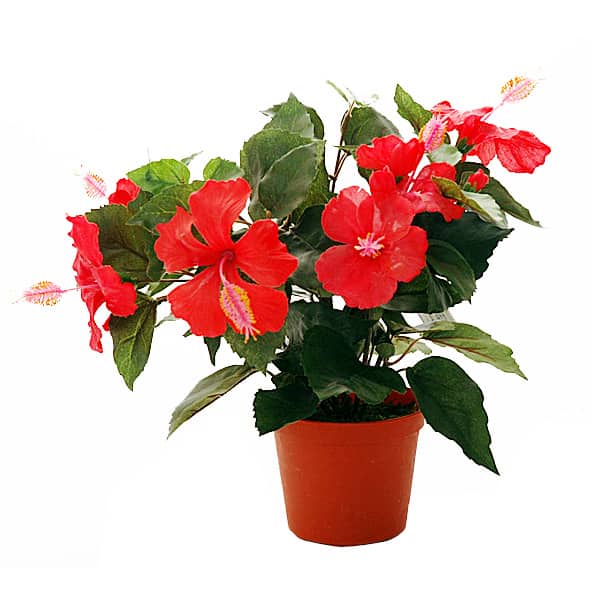
Chinese rose
With the arrival of spring, every amateur florist strives to put his collection of plants in order. A special place is given to reproduction, and any grower needs to know how to do this at home.
At home, you can use both methods of propagation of decorative hibiscus:
- The seed method, in which hibiscus seeds are placed in the soil.
- Vegetative method - cuttings, which must first be rooted.
Pros and cons of this method
Seed propagation of the Chinese rose has the following advantages:
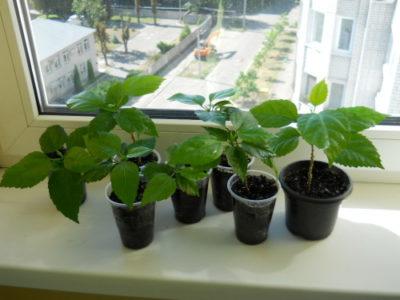

ease of implementation;- rose bloom can be seen in the year of planting;
- good seed germination;
- excludes the transmission of viral infection in the offspring.
- it is not possible to obtain a plant with an exact match of the varietal qualities of the "parent";
- when buying planting material, it often turns out to be of poor quality.
You can learn more about how to propagate a Chinese rose here.
Dividing the bush
A very effective propagation option for the Chinese rose, applicable, however, only to branched, fairly overgrown specimens. Usually the bush is divided in the spring, combining the procedure with plant transplantation. The procedure is quite complicated and time-consuming: experience and skills are required to carry it out correctly.
- First of all, the bush is dug up, then the roots are cleaned from the soil.
- Divide the bush with a sharp knife so that one division is carried out in one step. If the plant is small, it is divided into two parts, a large one into three, in rare cases into four.
- Make sure that every single part has a root system as well.
- After division, the plants are transplanted in separate containers. It does not hurt to check the roots before that and cut off those that have rotted, damaged, broken.
Further care of young plants should be reduced to regular watering, fertilization with compost or humus. It is possible to grow a full-fledged plant by dividing a bush very quickly, and with full preservation of varietal characteristics.
Can you get it yourself from an adult plant?
The flowers of the Chinese rose form pods that contain the seed. When they ripen, they open, and the seeds fall to the ground, from where they germinate. To use the planting material for planting in a specific place, you must first collect it:
- The ripeness of the pods can be determined by their brown color.
- Cover the plant with paper bags before dumping. This will prevent the planting material from scattering on the ground after opening the pods.
- Open the pods with your hands or with a knife, and collect the resulting seeds in a bag. Do not be alarmed if they are of different colors, since they do not ripen simultaneously.
Selection
After collecting the seeds, they should be sorted out.to exclude small, unripe, or damaged kernels.
Graft
For vaccinations to be successful, you should consider:
- use a young Chinese rose plant for grafting cuttings;
- inoculated into the crown of the plant;
- one bush should not contain more than 5 grafts;
- it is recommended to vaccinate in the first summer months.
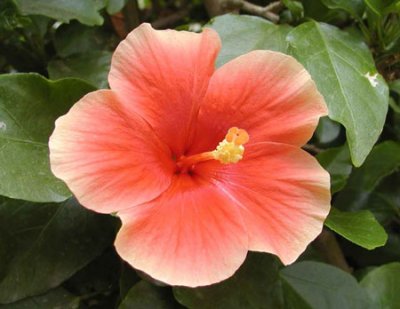

For grafted plants you need take good care of provide them with a well-lit place and provide regular feeding.
In winter, grafted hibiscus requires supplementary lighting (about 6 hours per day) so that vaccinations do not die off.
The use of grafts allows you to get several varieties on one plant.
How to plant hibiscus at home?
Required inventory
To plant wild rose seeds, you will need the following materials and equipment:
- container made of wood or plastic;
- nutritious soil;
- a container for water with a spray bottle;
- glass or plastic wrap.
Material handling
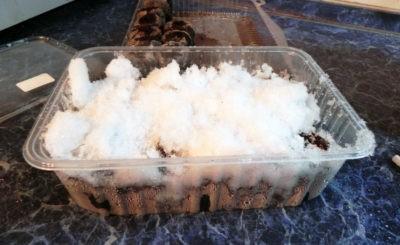

Seeds must be stratified before planting. This is a procedure during which winter conditions are artificially created. Due to this, the planting material germinates faster, which increases its germination.
- Place the seeds in a solution of potassium permanganate (100 ml of water and 1 g of the preparation). Keep the planting material there for 1 hour.
- Sprinkle the seeds in plenty of moistened sand and place in the refrigerator.
- Extract the planting material after 2 weeks.
Watch a video on how to correctly stratify:
Substrate preparation
The Chinese rose prefers sour soil. You will also need to add nutrients and substances. It is allowed to add fertilizers with a low concentration of phosphorus and a high concentration of potassium to the soil.
Landing
Landing operations are carried out according to the following scheme:
- Lay expanded clay at the bottom of the container. Its thickness will be 2-3 cm from the height of the pot.
- Fill the container with of the remaining nutrient mixture. Lightly tamp the soil.
- Spray it, mix and spray again with water from a spray bottle.
- Place the seeds in the pot with the sprouted part on their side. Sprinkle them with earth 1-1.5 cm, but do not tamp them.
- Spray the ground with seedlings again.
- Place the containers in a warm room, where the air temperature will be 28 degrees Celsius.
- For successful germination, seeds need a lot of ambient light. Otherwise, the stems will begin to stretch and fall. When the cultivation is carried out in the spring, and the daylight hours are short, then you need to take care of additional lighting.
- Cover the container with a plastic bag, which is opened once a day.
- Spray the kidney as necessary, preventing it from drying out or waterlogging.
Rooting
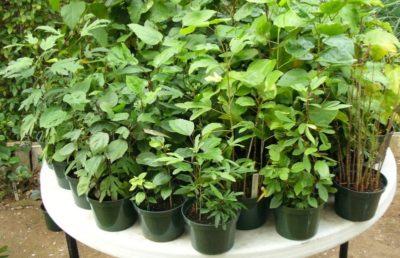

When the seedlings have grown and 2-3 leaves have formed, it is worth moving on to planting plants in separate pots.
- To do this, water the seedlings with water, and the next day, carefully remove them from the pot.
- Transfer to a new pot of nutrient mixture and water.
- Keep the pot in a warm and well-sanctified place.
Watch a video about hibiscus rooting methods:
Seed method
The least common breeding option for hibiscus, since it is labor-intensive and at the same time not very effective. Often, when the Chinese rose is propagated by seeds, this entails the loss of the varietal characteristics of the plant, which, of course, is an unpleasant surprise. However, if there are no other ways, you will have to use this. Next, we will consider in detail the procedure for seed reproduction.
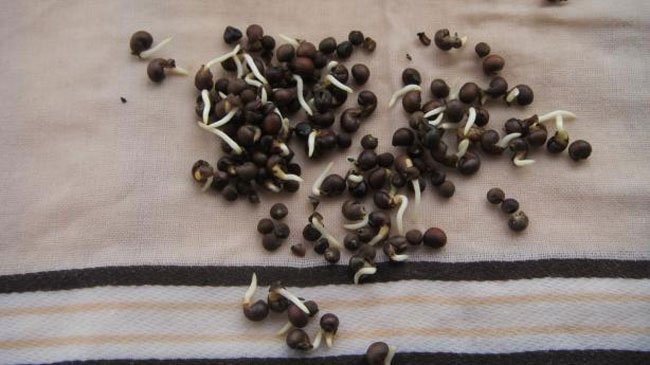

- First of all, hibiscus seeds are soaked in a growth stimulant solution: Zircon, Humate or Epin are fine. The procedure should last 1-2 days.
- While the seeds are soaked in the solution, mix them periodically (at least 2-3 times).
- Put the processed seeds on a cotton napkin, and put them on top in a plastic bag or plastic wrap.
- After 2-3 days, the seeds usually germinate. After the roots appear, they can be planted already in the ground.
- The soil in the container must be prepared in advance, be loose and consist of peat, leafy soil, wood ash and sand in equal parts.
- It is not necessary to deepen the seeds, they should simply be spread out over the surface of the substrate at an approximately equal distance.
- The seeds are watered, after which it is recommended to cover the container with polyethylene. Thus, a semblance of a greenhouse microclimate will be created inside.
- After 1-2 weeks, shoots appear, after which the shelter must be removed.
- After 2-3 months, the seedlings are already large enough, and they should be planted in separate pots. Further care as a full-fledged plant.
Advice
It is better to buy seeds. Harvesting them yourself is quite difficult, since the seeds must be taken not only fully ripe, but also pollinated. Otherwise, if they do, they are unlikely to have the varietal characteristics of the parent specimen. But usually unpolished seeds don't even sprout.
Follow-up care of a young plant
Consider how to grow a beautiful hibiscus at home, what you need to do for this.
Watering
The Chinese rose is a moisture-loving plant. As it grows, it forms many large leaves and large flowers that require a lot of water.
In winter, the plant is exposed to fungal root diseases. This problem can be solved by limiting watering. Hibiscus is a rather finicky ornamental crop, so it will not tolerate tap water. Use settled liquid with a pH of 5.0-7.0.
Pruning
Hibiscus needs regular pruning during cultivation. This will stimulate new shoots, rejuvenate and awaken the plant after winter sleep. Most often, the Chinese rose is pruned in late summer and early autumn. But in winter this should not be done due to the early formation and death of the buds.
Make sure the pruning shears are sharp and clean right before handling. Also sterilize it with alcohol gels. This will prevent infectious contamination of the branches of the plant. Trimming is done slightly above the nodes. In the process, weak, diseased or dead branches are removed.
Watch a video on how to properly prune a young hibiscus:
You can find out more about when and how to properly cut a Chinese rose here, and more details about general care for a Chinese rose at home can be found in this material.
Fertilizer
To maintain healthy growth and a beautiful decorative look, it is necessary to make top dressing.
To do this, use the following substances:
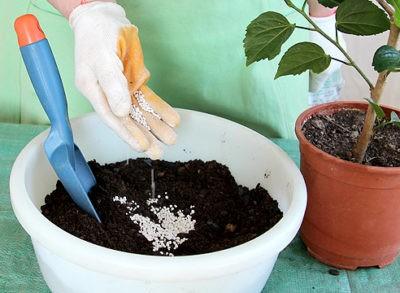

Potassium. Add garden potassium during flowering periods. It neutralizes stressful situations that a culture can be exposed to. Potassium is also an irreplaceable assistant in photosynthesis.- Phosphorus. Hibiscus does not tolerate this element well in high dosages. If you use it for a long time and abundantly, then the roots block the intake of phosphorus, as well as other minerals and nutrients. Because of this, the plant will grow slowly and eventually die.
- Nitrogen. This element is used in high concentration prior to flowering. It is necessary for the synthesis of proteins, enzymes and other metabolisms. If you add it in an increased dosage, then burns will form on the leaves, and an insufficient amount will lead to slow growth.
Care features
We will learn how to properly care for young, freshly rooted Chinese rose seedlings.
Watering
If an adult plant is able to easily withstand a short drying out of the soil, then it is better not to allow this in relation to young hibiscus. Moistening of the soil should be moderate, but optimal moisture must be maintained at all times, preventing the earth from drying out. The seedling will react negatively to drought by dropping and wilting of leaves, lack of flowering, and a general loss of decorativeness.
Sprinkle with a little water. Only droplets should seep from the drainage holes after watering, and not streams. Watering should be more frequent and plentiful in summer, much less often in winter. If the summer is especially dry and hot, you can even water it twice a day: in the morning and in the evening.
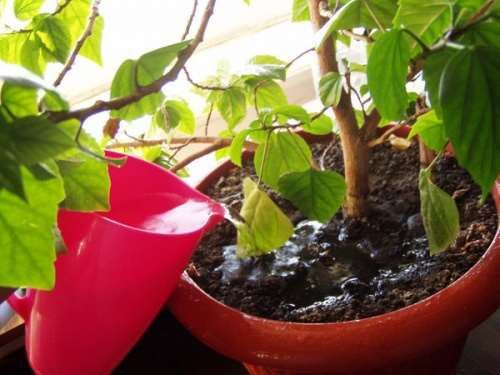

In addition to watering in the summer, spraying is also recommended to maintain optimal humidity. After moisturizing procedures, it is recommended to loosen the soil and, if necessary, remove weeds.
Top dressing
A young seedling made from organic fertilizers is suitable for compost, as well as humus. And in order for the plant to quickly please with flowers, complex minerals are added to the soil when watering. Mineral dressing is recommended no more than once every 2-3 months and should contain mainly phosphorus, in a smaller amount - nitrogen. In the fall, add potassium to help the plant survive the winter better.
In order for the plant to develop correctly and bloom profusely, it is recommended to alternate mineral and organic fertilizing. But do not allow an overabundance of fertilizers, since in this case only shoots will grow rapidly in hibiscus, and flowering will take a long time.
Top dressing is applied only liquid and exclusively during the growing season: that is, from May to September. In the cool season, you cannot feed the Chinese rose.
The plant also reacts well to foliar dressing, especially nitrogen. However, when the plant already has flowers, it is not necessary to spray it with fertilizers: after the procedure, ugly spots and stains may remain on the petals.
Sugar dressing is useful for young hibiscus, which is easy to prepare at home. A teaspoon of sugar is diluted in a glass of water, stirred, and then the flower is watered with the resulting syrup. It is important to stir the sugar thoroughly to dissolve any individual grains.
Topping
As soon as the seedling has taken root in a permanent place and started to grow, you need to start pinching the plant. The procedure will help to form a lush, abundant and beautiful crown. Young shoots are subject to pinching: their very tip is removed.
Pest and fungus treatment
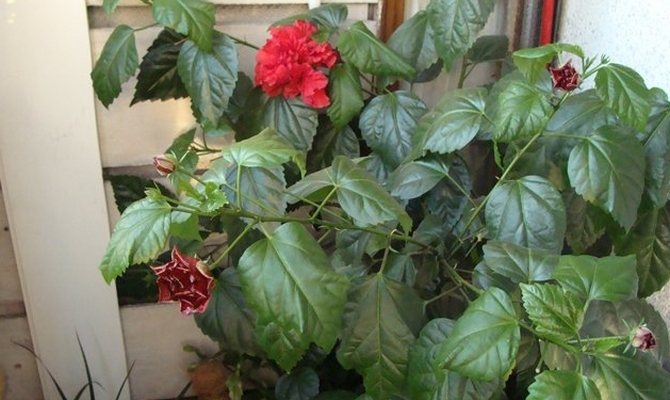

The young seedling is threatened mainly by spider mites and aphids. To prevent pest attacks, it is necessary to carry out timely preventive spraying with special preparations. If the insects have already started, it is recommended to rinse the leaves of the plant under running water and soap.
It is difficult to notice a spider mite: usually the pest is found only when it has already managed to cause profound destruction. Fitoverm can help to cope with insects: along with an effective effect, it is completely safe. There should be three treatments with a distance per week.
If Fitoverm does not help, use "heavy artillery" in the form of drugs:
The plant is also affected by the scale insect. The danger of this pest is that it is especially difficult to remove it: due to its durable shell, the scale insect is resistant to insecticides. However, double spraying with Aktara can solve the problem. It is recommended to pour the solution remaining after spraying into the soil in order to radically solve the problem with the pest.
It is also possible that hibiscus is affected by a fungus: in this case, black spots appear on the leaves, the buds fall off, the plant wilts noticeably, it may die. Usually, the appearance of a fungus is associated with excessive moisture in the rose, and sometimes with its content under drafts, in conditions of sharp temperature changes. You need to fight a fungal disease with the help of special fungicides, folk methods are ineffective here.
Attention: treatment with toxic drugs is best carried out outdoors, in the garden, on the balcony, in another place with open and abundant air access.
Advice
- Provide the young Chinese rose with good lighting, but protection from direct sun.
- The plant should be protected from drafts - the hibiscus cannot stand the cold breezes of the wind and reacts extremely negatively to them.
- As for the temperature of the plant, it should not be too high. Optimum in summer is +16 degrees, in winter from +10 to +14.
- In summer, it is recommended to take the plant out to a balcony or terrace: where there is a lot of fresh air. In conditions of abundant, but not direct lighting and a sufficient amount of fresh air, the plant will bloom especially abundantly.
Solving Potential Problems
In the process of growing a Chinese rose, the following difficulties may arise:
- If the leaf plate turns yellow, this indicates a lack of iron and nitrogen. Watering with settled water with the addition of iron compounds will help to solve this problem. When top dressing does not give the desired result, then it is worth examining the roots, as they can be damaged by frost or fungus.
- With a small number of flowers and large greenery, stop applying nitrogen-containing fertilizing. Also take care of high-quality lighting and a warm climate.
- During dry weather, with inadequate watering, the plant can infect a spider mite. To prevent this, spray the bush in the morning and in the evening with water from a spray bottle.
- Sweet nectar beckons aphids to flowers and buds. Here you will have to use special chemicals for processing.
Watch a video on hibiscus disease prevention and pest control measures:
It may seem to someone that the seed method of planting hibiscus is a complicated matter, but to someone this breeding option will seem the most optimal. But all gardeners necessarily agree that the flowering of this vibrant plant brings joy and at the same time pride in the cultivation of this beauty.
Read also: Voskresenskoye village, alexandrovsky district of the vladimir region
If you find an error, please select a piece of text and press Ctrl + Enter.
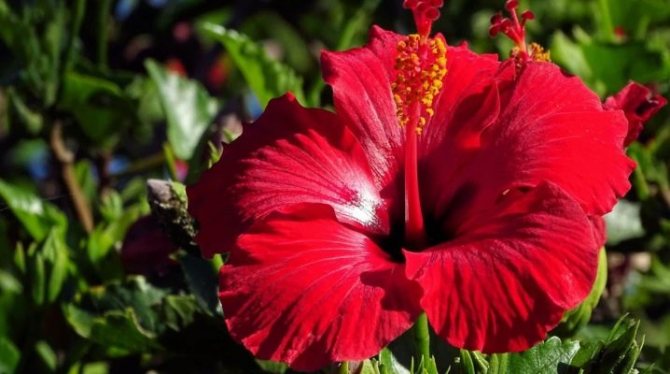

Hibiscus is a genus of plants in the Malvaceae family, often referred to as the Chinese rose or the Egyptian rose, although, of course, they have nothing to do with Rosaceae. Hibiscus has become widespread as cultivated plants due to its extraordinary flowers and unpretentious cultivation.
What to do when the castings of a Chinese rose turn yellow
If yellow spots began to appear on the leaves of the hibiscus, this means that the plant has undergone a disease. Over time, all the greenery will begin to spin and dry, as a result, it will fall off and the flower will die.
If you carefully examine the Chinese rose, you can see a tick. This parasite is very dangerous for the plant, therefore, its neutralization is required. How to do it? It is necessary to spray the leaves of the hibiscus with pesticides, for example, "Aktelik" or "Fitoferm". These substances are used to treat indoor flowers. To completely defeat the parasite (tick), it is worth disinfecting the plant at least three times. You need to do this procedure with a frequency of once a week.
Experienced flower growers know that the best fight against flower diseases is prevention. To do this, it is worth treating a Chinese rose with disinfectants once a month.
Features of the
The main thing when growing hibiscus is to find a suitable container and a place where it will grow. It is best to avoid direct sunlight when placing it.
Caring for this plant is simple, it is also important not to allow the soil to dry out, because it is an inhabitant of the humid African tropical forests.
Hibiscus blooms usually in early spring, blooms for a long time. A developed plant does not lose its attractiveness even in winter, resembling a small evergreen tree.
It is quite easy to propagate a flower. You can do this using cuttings - cut branches.A good result is given by dividing the bush, so from one overgrown hibiscus you can get several already sufficiently developed specimens at once. But hibiscus is also famous for one more feature - the ability to give numerous viable seeds even when grown indoors, which is not at all typical for tropical plants that find themselves in such conditions.
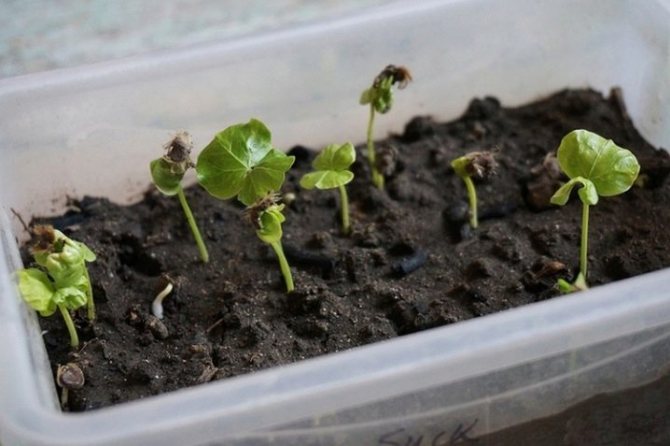

How to root?
There are 2 ways of rooting a propagated plant - in water or in soil.
In the soil


Before planting hibiscus in a pot of nutritious soil, wait until strong roots appear on the cut cuttings.- To do this, they are planted in a cup, which is filled 1/3 of the soil with soil (2 hours of leafy earth and 1 hour of peat and sand).
- Before planting, each stalk is dipped in heteroauxin powder.
- After planting, the soil is filled up, and compacted around it.
A hibiscus stalk gives roots for 25-30 days. Rapid root formation is provided for those who make a mini-greenhouse or greenhouse from improvised means. With the help of a mini-greenhouse, they maintain high humidity and temperature in the region of 22-25⁰С.
In water
- To root the cuttings in water, take a dark glass container.
- Warm, but settled water is poured into it.
- 2 tablets of activated carbon are added to it, a few drops of fertilizer are dripped so that the cutting receives the necessary nutrition during root formation.
- The container is placed on a well-lit, but not in direct sunlight, windowsill.
What do seeds look like?
Fading away, hibiscus forms rounded pods with seeds. As they mature, they dry out and begin to open, throwing out the seeds. It is difficult to confuse them with the seeds of other indoor or garden ornamental crops. They look quite massive, although the seed size usually does not exceed 3 mm. Normally ripe seeds are dark brown, almost black in color. In shape, a seed close to the shape of a circle is slightly pointed in the lower part, where the embryo is located, therefore some growers compare it with the symbolic figure of the heart.
The main difficulty is not to miss the moment of fruit opening. Collecting spilled seeds is not easy at all. The ripening of the fruit will be indicated by its color. The pods gradually lose their green color, becoming brown. Some growers suggest at this time to cover the plant with open paper bags that will catch the falling seeds. In this case, ripening will be natural, which will allow you to get more germinating seeds.
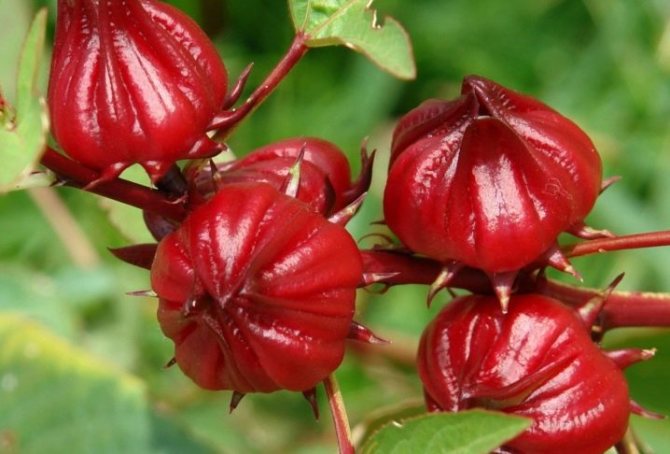

It is also possible to collect pods with their further drying and artificial opening with a knife. The seeds do not ripen at the same time, so their color will be different. In this case, there is a danger that some of the seeds will be immature. However, this method completely excludes accidental losses, the yield of planting material in the end turns out to be practically the same as in the first case. The collected seeds have to be sorted and sorted by hand. This is necessary to exclude immature or damaged instances. Loose seeds can spread mold and rot.
Professionals recommend using only the largest seeds for planting, which seems quite justified, since such material has a sufficient supply of nutrients and, as a rule, a healthy embryo.
Novice growers often keep all the seeds they receive, treasured by the first positive results of the cultivation of the Chinese rose. However, practice shows that pity in this case is inappropriate, since low-quality seed material can cause serious disappointment, since most often it does not justify expectations. And if the plant does miraculously rise, it will be very difficult to grow a weakened sprout.
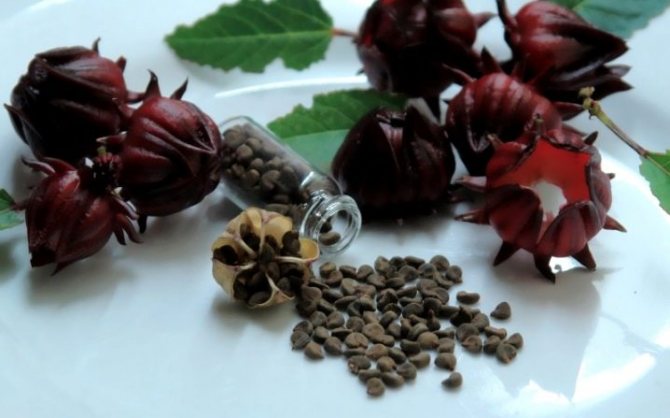

Cuttings
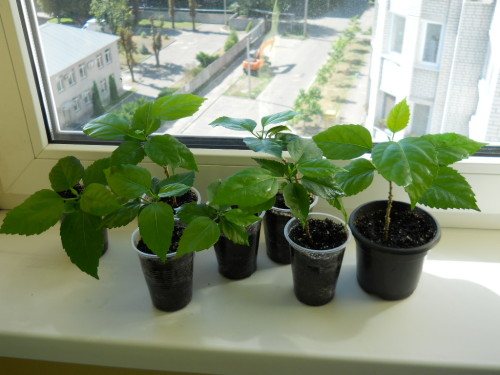

The most popular breeding method for the Chinese rose, as well as the simplest.You can propagate a flower by cuttings throughout the year, and a beginner can cope with a simple procedure. But experienced flower growers still advise to try to carry out reproduction in spring or summer for a start: in the warm season, the likelihood of survival of the shoot is greater.
Only an adult hibiscus is used as a donor plant - healthy and strong, at least once faded. Before cutting off the shoot, the plant must be well watered. A high-quality shoot should have at least two full-fledged internodes, and the shoot itself should be green, but strong, 8-15 cm long (see photo). The leaves from below are necessarily cut off, since in water or soil they can then rot.
The stalk should be flexible and green above, and semi-lignified at the bottom. It is not worth using completely green shoots: they are most likely to rot in the soil or ground instead of rooting. The shoot is cut from the bottom along the oblique, from above the cut is made straight.
As a soil, you can take a commercial substrate intended for indoor plants. At least it will not have to be subject to troublesome disinfection. Only make sure that the soil is loose and has good permeable properties. It is recommended to keep the cups with sprouting cuttings at a temperature of +24 degrees.
The pot, into which the stalk with roots will be transplanted, must be disinfected in advance. If the container is old, already used, wash it with laundry soap and pour over boiling water. The measure is aimed at destroying harmful microbes and pest larvae.
Rooting in water
You can root hibiscus cuttings in water - a simple and quite affordable, effective method, great for beginners.
- Cuttings are cut in the standard way, the leaves are removed from below, and shortened from above if necessary.
- Glasses should be opaque to exclude blooming of water, reproduction of microorganisms in it. A dark glass container is ideal.
- Pour into a glass of water and add an activated charcoal tablet for decontamination.
- Place the cuttings in water, and remove the container in a bright place. Top up with fresh water periodically and add some charcoal.
- Wait for the roots to grow up to 0.5 cm, and then transplant the cuttings into the ground. If a more significant regrowth of roots is allowed, the seedlings will take root in the ground much worse.
Rooting in a peat tablet
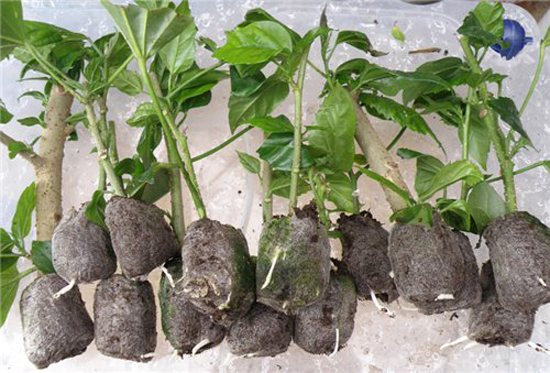

When propagating by cuttings of hibiscus, it is convenient to use modern pressed peat tablets: this eliminates the need for preparation and disinfection of the soil, and the plant receives all the necessary nutrients. Many growers, by the way, consider this method to be the most effective for the propagation of hibiscus.
- plastic glass with a volume of 300 ml;
- expanded clay drainage;
- growth stimulant;
- baking powder in the form of perlite / vermiculite;
- plastic bag.
- Pour the peat tablet with boiled, but already chilled water. To swell the peat, give it a little time.
- The stalk is cut from the mother plant just before rooting. The cut must be dried in air, soaked for 1-2 hours in a root stimulant.
- Drain excess water from the swollen peat, add vermiculite / perlite, mix everything.
- Expanded clay is poured into a glass, peat soil is on top.
- The stalk is deepened by 2-2.5 cm. The lower leaves must be cut off completely, and the upper ones, if they are large, must be shortened in half.
- A polyethylene bag is put on top of the handle. Thus, a greenhouse microclimate is obtained inside, very favorable for hibiscus rooting.
- Place the glass in the light, but out of direct sunlight.
- Ventilate the cutting regularly, water the soil as it dries.
- After 2-3 months, young hibiscus will take root well in peat. Through the transparent plastic of the cup, the emergence of roots is easy to trace.
- Transplanting into a permanent pot is carried out when the root system becomes sufficiently powerful and branched.
Pros and cons of growing
Breeding hibiscus with seeds is the most natural way to reproduce them. Its main advantages can be considered simplicity. It is not at all difficult to get viable seeds in the case of hibiscus, it will bloom quite quickly, already in the first year. It is not necessary to create special conditions for watering, lighting or air humidity. It is relatively easy to grow a flowering and fruiting plant at home. Reproduction by seeds allows you to stop the spread of infections that can infect a plant and that penetrate all its organs. Therefore, viruses will be present in cuttings with which hibiscus can be propagated.
The seed method of propagation also has negative sides. It will not be possible to obtain a copy of the mother plant in this way. During sexual reproduction, hereditary traits are combined in a random way, this is a way to increase the diversity of forms, which is very important for the preservation of the species in its natural habitat. When buying hibiscus seeds, you may encounter a substandard productfor example, spoiled or insufficiently ripe seeds. There is never enough confidence that a plant will grow from the purchased planting material with exactly the properties that are indicated in the description.
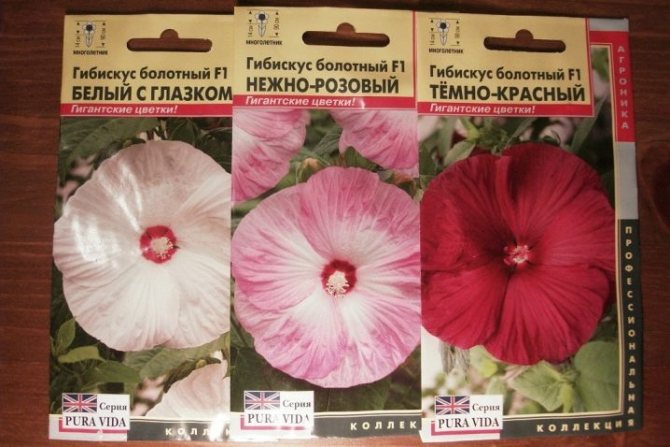

Growing process - propagation of a Chinese rose by cuttings
All plants have several methods of propagation.
How to breed hibiscus:
Most often, cuttings are used as planting material. They are able to quickly release roots and grow. Propagation of a Chinese rose by cuttings is not a difficult process.
In any summer month, you need to cut off the top of the young shoot. It is important that there are at least two internodes on the planting material.
The cuttings must be treated with a growth stimulant and rooted in a container with prepared soil. Peat and humus can be added to the soil.
It is better if the transplanted cuttings grow in a warm temperature regime (minimum 22 degrees, maximum - 25). Thirty days later, the young shoot will fully take root.
Preparation
To grow hibiscus from seeds, you should seriously prepare for this. You also need some equipment. First of all, you need a wooden or plastic box. It needs to be filled half the depth with a nutrient substrate - specially prepared soil. You will also need a container for irrigation with a spray function (a simple sprayer or spray bottle will do). In order to create a greenhouse effect, you need to prepare a suitable size glass or a piece of transparent plastic, in the most extreme case, polyethylene.
Before planting hibiscus seeds are recommended to be stratified - premises in conditions of artificial winter. This is believed to stimulate the onset of the embryo's development. This is how it is done. The prepared seeds are placed in a weak solution of potassium permanganate for about 1 hour. Then wet sand is placed in a container with them, all this should be in the refrigerator. In such conditions, seed material stays up to 2 weeks.
During this time, it is necessary to prepare the soil. At home, these plants grow on acidic soil. When forming the soil, you need to periodically measure its acidity. It is a good idea to enrich the soil with calcium. Also, one should not forget about drainage, therefore, it is better to fill the bottom part of the container into which it is planned to sow seeds with expanded clay. Fill the container with soil mixture by three quarters.
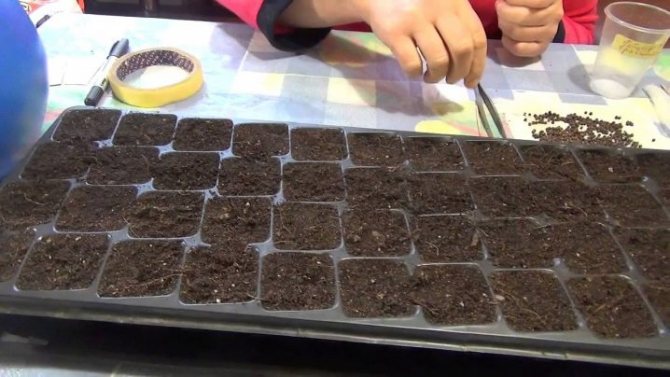

Ways to stimulate rooting
You can help the cuttings grow roots with the help of folk remedies, as well as specialized preparations. Tried grandma's remedies include:
- Willow water.It is enough to place several young willow branches (up to 6 mm thick) in a container with water and wait for the roots to appear in them to get an ideal solution for rooting hibiscus cuttings.
- Honey. In 1.5 liters of water, 1 teaspoon of honey is diluted. Cuttings are soaked in this solution for 12 hours, after which they are placed in clean water, where they will root as usual.
- Knowing how to propagate street hibiscus by cuttings, you can easily root a twig from any bush you like. For propagation of garden (herbal) hibiscus, potatoes are used. The ends of the cuttings are stuck into it and buried together with the tuber in the ground. The nutrients of the potato will feed the young bush for a long time.
Ways to stimulate hibiscus
Among the drugs that can be purchased in the store, the following have worked well:
- Kornerost (heteroauxin) is a phytohormonal agent with high activity. Its use helps not only to speed up the process of root formation, but also the survival rate of the cuttings after planting. The working solution is prepared in the proportion: dilute 50 mg in 1 liter of water. It can be used to soak cuttings immediately after cutting, as well as for subsequent watering.
- Kornevin is a biostimulant of the widest spectrum of action. The powder is diluted in a proportion of 5 g per 5 liters of water. The ready-made solution is used for soaking cuttings for a day, as well as for watering after planting.
- Zircon is the safest root formation stimulant, harmless even for bees. Sold in ampoules. According to the instructions, the product is diluted in water and the cuttings are kept in this solution before rooting. In the future, the agent can be used for feeding, diluting it in water in a proportion of 1 ml per 1 liter of water.
Landing
Seeds prepared by stratification must be germinated. When the soil is ready, you can sow. Before sowing, the soil in the pot must be moistened, it is better to do this by spraying. The seeds are placed on a layer of soil, then sprinkled with loose soil of the same composition up to 1.5 cm thick. The resulting surface must be sprayed again.
It is necessary to germinate in a room with an air temperature of about 28 ° C. A good result can be obtained if you take out a container with germinating seeds on a glazed balcony. When stable hot weather is established, if the windows are not opened at night, the temperature can reach very high levels in the early morning hours. Also, on a balcony or loggia, it is easy to create satisfactory lighting conditions. Otherwise, artificial lighting of germinating seeds will have to be organized. Otherwise, the sprouts will come out thin and brittle.
The container in which the seeds germinate should be covered with glass or polyethylene. This allows you to create a special microclimate that mimics the conditions of a tropical rainforest.
However, at least once a day, it is necessary to ventilate by moving the glass (or polyethylene) aside. It is necessary to carefully monitor the moisture content of the soil; drying and waterlogging should not be allowed. The soil should always remain crumbly. If humidification is required, use a sprayer.
Several related species of hibiscus have spread in culture. The most popular among florists are: changeable hibiscus, trifoliate hibiscus, Syrian hibiscus (usually planted in open ground) and some other species of the Malvov family, sometimes also referred to as hibiscus. The Chinese rose "Angel Wings" or "Angel Wings" has become quite widespread. This type of hibiscus can be grown both in a pot in an apartment, and in the open field. The seeds of such universal species also need to be collected; this process is especially difficult when growing a plant in soil.In the early stages of development, the germination of the seeds of this hibiscus is no different from others.
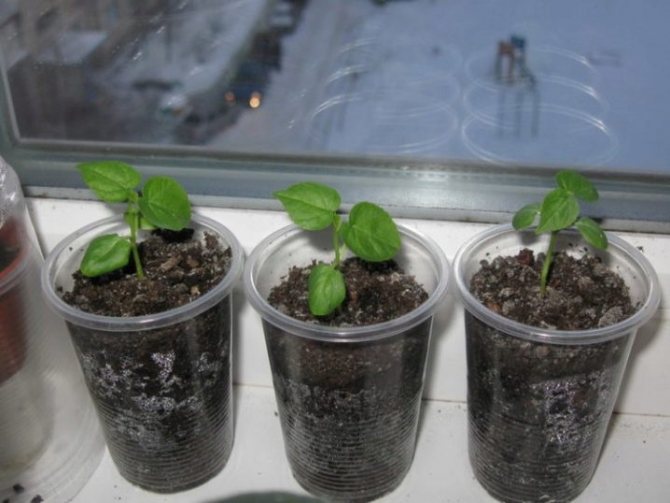

How the Chinese rose blooms
The Chinese rose (indoor) is quite popular among flower growers, not only because of its easy maintenance, but also because of its beautiful flowers. They delight with their inflorescences for a short time, only two or three days. But on the bush, new opening buds constantly appear, one after the other. Therefore, it seems that hibiscus blooms for a long time. But this is provided that this bush is complete and healthy. A photo of a Chinese rose taken during the flowering period is a stunning sight.
The color scheme of the plant can be red and white, purple and orange, and one bud is able to combine two palettes. Specialty shops nowadays offer low-growing hibiscus varieties (Dutch hybrids).
Rooting
The appearance of 2-3 leaves on germinating hibiscus sprouts indicates the need to plant plants in separate pots. You need to plant the plants one at a time. Gaining strength, seedlings will begin to compete with each other not only in terms of water and nutrients, but also in terms of volume, this can seriously affect the shape of the shoots and reduce the decorative properties of plants. In order not to damage the developing root system, the sprouts should be watered on the eve of planting in the evening. This will allow them to be easily and easily removed from the soil.
Planting a seedling in a pot of prepared soil is not difficult. To do this, you need to make a depression in the soil with a stick or even your finger, where you gently lower the root of the seedling. Then, without tamping, sprinkle the hole with earth. After planting, the plant must be watered.
Read also: Fermented jam tincture at home
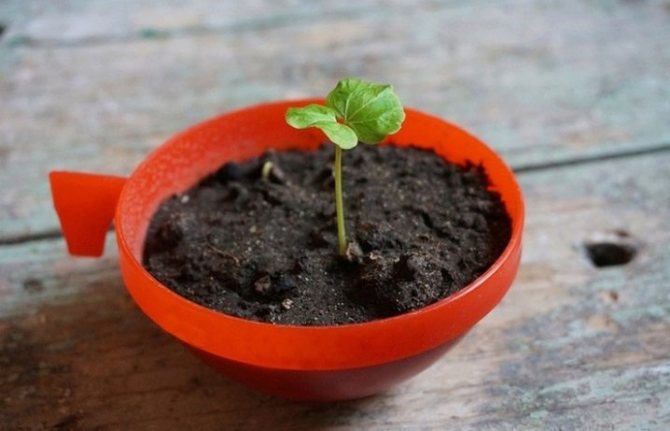

Timing of hibiscus cuttings
The ideal time for formative pruning is early spring. Even before the first buds appear on the bush, you need to cut off the shoots of the previous year. A good cutting should have at least 3 buds. In this case, the chances of rapid rooting and favorable development of the bush are maximum.
The second option for propagating hibiscus by cuttings at home is in the summer months. Since the intensity of natural light at this time is the highest, you can do without a container of water. For reproduction, a shoot with several rows of leaves and without buds is chosen, and then it is carefully cut off.
On a note! After dusting the cut with any rooting stimulator, the cuttings are immediately planted in a prepared pot. After a couple of weeks, with successful rooting, new leaves will appear at the top. This will be a signal that the shoot has taken root in a new place and it is time for it to pinch the top.
Care after the procedure
Hibiscus is an inhabitant of humid forests. Creating comfortable conditions for him, you need to organize regular watering. The plant is especially active in absorbing water and solutions from the soil during the period of active growth, that is, in summer. Some flower growers recommend watering the seedlings daily, the main thing is to avoid stagnant water.
With a lack of moisture in the plant, the leaves quickly begin to wither, this is the first sign of insufficient watering.
To ensure intensive growth and development of hibiscus, fertilizers must be applied to the soil. They are especially important during flowering and fruiting. At this stage, garden potassium is added to the soil. Before flowering and during the "rest" between flowering, hibiscus can be fed with nitrogen. Despite the fact that this element is necessary for the formation of green plant organs (leaves, buds and new shoots), an overdose of nitrogen can cause burns on the leaves.
During the winter dormant period, it is better to stop fertilizing altogether. Periodically, the hibiscus will have to be trimmed. This procedure is especially important after winter rest. It will awaken dormant buds and thus rejuvenate the plant.
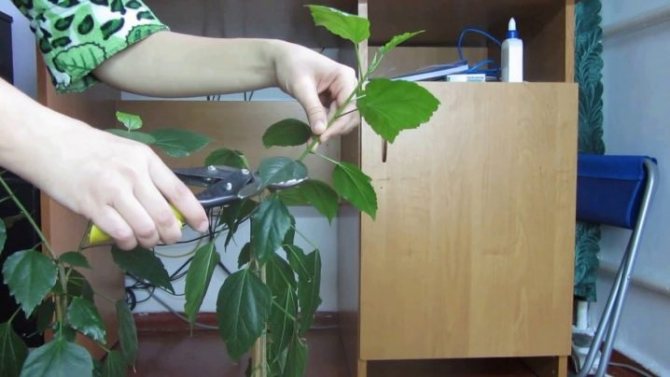

Rules for planting cuttings in the ground
Either cuttings without roots are planted in the ground, or those that have previously sprouted in a container with water. In both cases, the soil should be well hydrated and nutrient-rich. Do not water the hibiscus too often. He loves water, but does not tolerate its stagnation at the roots.
Interval watering is recommended during the summer months. To do this, abundant irrigation is alternated with moderate until the earthen coma is completely dry. This is one of the easiest ways to spur a plant to grow and bloom. With abundant watering, fertilizers must be added to the water.
Planting hibiscus cuttings in the ground
From November to February, the plant is dormant, so it does not need intensive watering. At this time, the soil should be moistened only when it dries well. For control, you can have a wooden stick on hand. If, when sticking it from the edge into the ground, the soil does not stick to the tree, then you can water it.
Important! Nitrogen fertilizers are not suitable for hibiscus, they do not cause either active growth or flowering.
The optimal time for the first feeding is the second half of March. Potassium-phosphorus fertilizers are added to the water for irrigation. Subsequent feeding is carried out 1-2 times a month, giving preference to complex mineral fertilizers for indoor flowering plants.
Possible problems
Yellowed leaves may indicate a lack of certain minerals in the soil or water. However, the same symptom may be due to root damage by a fungus. The plant is actively gaining green mass, but blooms poorly. One of the most probable reasons may be the abundance of nitrogen in the top dressing, no less likely is the low temperature in the room where the plant is grown., but most often it can be caused by the aging of the shoots. A simple cropping sometimes helps to solve the problem.
During the onset of summer drought, when the soil dries out quickly, in order to avoid being affected by a spider mite, hibiscus must be sprayed with water at least 2 times a day. Hibiscus growing on a balcony or temporarily planted in a summer cottage can attract aphids. To avoid this, you need to stock up on a special insecticide.
What is Hibiscus? Hibiscus, any of the many species of grasses, shrubs, and trees that make up the genus Hibiscus, in the Malvaceae family and native to warm temperate and tropical regions. Some of them are grown as ornamental plants for their showy flowers. A sunny, wind-sheltered space suits the plant well. Hibiscus now includes the former genus Abutilon, containing over 100 species of herbaceous plants and partly woody shrubs found in tropical and warm temperate regions. Shades are different, from yellowish to red. Other colors can be seen. Plants are usually planted outdoors in warm regions and grown in greenhouses.
Top dressing for Chinese rose
Chinese rose (indoor) is very responsive to fertilizers. The plant is fed only in the warm season: in spring or summer. In cold weather, hibiscus easily dispenses with additional nutrients. Fertilizers are applied once every two weeks.
For feeding indoor flowers, there are a lot of complex "nutrition". They are best purchased at flower shops.
The composition of fertilizers should include the following elements:
For the full growth of a Chinese rose, you need to feed its horse system, with a frequency of once a month. All fertilizers are best diluted in warm, settled water. Also, substances containing nitrogen should be sprayed with the greens of the plant. Do not let the solution get on the hibiscus flowers, this can lead to stains on them.
You should not "overfeed" or "underfeed" the flower with fertilizers, as the plant can die. It is because of this that the leaves of the Chinese rose turn yellow. Gradually, all the greens will fall off.
Growing hibiscus from seeds at home
Is there something special that needs to be done to get the hibiscus seeds to germinate? There are two types of hibiscus - the hardy type and the tropical type. At home, they can be grown as houseplants, but only the hardy species will survive the winter. For example, the features of caring for a Chinese rose are different. Tropical hibiscus can be grown indoors to preserve it until next spring.
1) Germination:
After the flowers fall, watch them to see if they are producing seed pods. Leave the pods on the plant until they are brown and crispy, then remove them from the plant. Each bud usually contains 10 to 20 seeds. Seed material needs to be prepared. Break open the pods and remove the seeds and keep them dry until you are ready to germinate. Both types of hibiscus produce seeds with a hard outer cover that must be broken or cut to allow moisture to penetrate and the germination process can then begin. Seeds from hardy hibiscus will also require multiple freeze / thaw cycles called layering. This is nature's way of allowing them to germinate much faster. Stratification can be achieved naturally by keeping them outdoors in a dry place but subjecting them to our normal winter temperatures, or artificially by placing them in the freezer for several days, then allowing them to thaw and repeat several times. You can put the seeds in an open plastic bag. Tropical hibiscus seeds do not need stratification. Both types of seeds still need to be opened externally, which can be a tricky process. One way is to lay out each seed, then, using a razor blade or small knife, pry open the outer cover without damaging the inner parts. Another way is to soak the seeds for a few hours to soften them, then place them in a jar with some aquarium gravel and shake well. Once the outer cover is open, they are ready to germinate.
2) Landing:
The seeds can be planted in a purchased seed sowing medium, or the mixture can be made from some combination of sand, perlite, vermiculite, and peat. The mixture should contain nutrients that are beneficial to the plant. Soil for sowing hibiscus seeds is normal. The main thing is not to overdo it with soil components. The seeds are planted two to five centimeters deep and should germinate on average from a week to a month. It is best to keep the temperature around 28 ° C and keep the environment moist but not damp. A heat mat is useful to secure the bottom. Until you know what works best for you, seed starter kits available from gardening stores and catalogs that use small plastic pots may be the best way to get started. Later you will learn that each seed that has hatched is sown separately. One seed per pot is enough. Some people use Styrofoam coffee cups with drainage holes to start seedling. It is imperative that you do not use too much water. Seeds will rot and will not germinate if left in a moist / damp environment. Those with a garden or vegetable garden plant seedlings in open ground. In this case, hibiscus seedlings from seeds are placed in pots.
Once the seedlings show some mature leaves and the stems begin to harden and become woody, they can be transferred to a larger pot. Fertilizer can be used on a plant, but read the instructions carefully. Certain fertilizers are not suitable for all varieties of hibiscus. It is necessary to take out the hibiscus seedlings in a warm place. These small seedlings should be gradually exposed to the sun over several days. Remember that they are delicate, so avoid cold temperatures.Keep it where it will receive several hours of direct sunlight each day. Reread the description and growing hibiscus will be successful.
How to plant a homemade Chinese rose
To plant a Chinese rose with shoots, you need:
- take a stem with a diameter of about 0.5 cm;
- cut off the top at a distance of 15 cm and remove the leaves from the bottom;
- plant in a container;
- put in a place with good lighting;
- produce moderate and regular watering.
To make an annual transplant of a Chinese rose, a fertile mixture is prepared from sod and leafy soil, humus and sand. For young hibiscus, peat is also added. Expanded clay or brick fragments are placed at the bottom of the pot in order for drainage to take place. To less traumatize the roots, hibiscus from one pot is placed in another by transferring.
Chinese rose transplant
Hibiscuses are also planted by dividing the bush, but this method is used mainly for garden plants. The best time for the procedure is spring. Depending on the size of the bush, a knife, pruner or saw is used. Before dividing, the blades are disinfected, for example, with alcohol.
Note! By dividing, you can propagate Chinese roses that had at least 2 stems last season.
The bush is dug up, the earth is shaken off and, without damaging the extra roots, the trunks are separated. Then these shoots, which must necessarily have at least a few roots, are planted in pots with earth and compost. Water regularly, but in moderation.
How to water hibiscus
The plant needs to develop well. Potted soil tends to dry out faster than flowerbed soil, so you'll need to keep an eye on watering the hibiscus if it's planted in pots. Always plant them in pots with drainage holes at the bottom. To determine when to water your tropical hibiscus, insert your index finger into the soil. If it comes out dry, it's time to water. To ensure that the entire root ball is moist, water slowly so that the water flows to the bottom. Wait until the water is completely absorbed and repeat the process. During particularly hot weather, you should also water the hibiscus twice a day.
1) Watering Frequency: In their native habitat, tropical hibiscus plants get a lot of moisture from moisture and rain. In dry climates, irrigation should replace natural sources of moisture; the hotter and drier the weather, the more often you will need to water your land-grown tropical hibiscus. Experts advise to water the plant once a day when the air temperature is from +20 to +25 degrees; increase the frequency up to twice a day, when the temperature ranges from 25 to 30 degrees. This same chart works for hardy hibiscus. The plant needs the necessary care.
2) Amount of water: The average root depth of hibiscus is 15 cm, so you need to saturate the soil to that depth when you water them. The best way to ensure sufficient water is to install a drip irrigation system or use hoses. Spray the bushes periodically.
Read also: Life hacks that can be made from a bottle
How to grow at home?
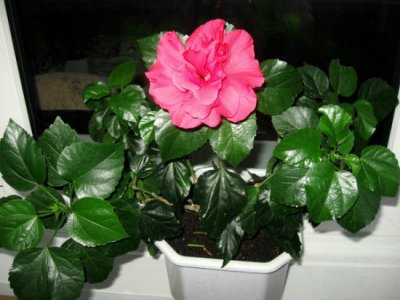

You need to carefully consider the choice of location: hibiscus is necessary good illumination and sun protection. Drafts are unacceptable - the plant does not tolerate them. The optimum temperature is 12 -16 degrees, not lower than 10 degrees in winter.
Hibiscus requires abundant watering in summer, moderate in autumn, limited in winter. In summer, it is recommended to spray, apply top dressing from March to September inclusive.
Do not overdry the earthen lump in the pot, otherwise it may start leaf fall, loss of buds and lack of flowering further.
Propagation of hibiscus by cuttings
Propagation by cuttings, whether tropical hibiscus or hardy hibiscus, can be done in the home garden, and both varieties of hibiscus reproduce in the same way.Hardy hibiscus is easier to spread than tropical hibiscus. With a little knowledge of how to propagate hibiscus, you can be successful with any kind of plant. Both hardy and tropical hibiscus breed from cuttings. This is usually the preferred method for distributing hibiscus because you will see an exact replica of the parent plant. When using cuttings to propagate hibiscus, start by cutting. Cutting should be done from new shoots or wood. The wood is the branches on the hibiscus that are not yet ripe. The wood is malleable and often has a greenish tint. You will mainly find softwoods on hibiscus in the spring or early summer.
The hibiscus cut should be 10 to 12 cm long. Remove everything except the top set of leaves. Trim the bottom of the hibiscus to cut it just below the bottom leaf node (the joint where the leaf grows). The next step for spreading hibiscus from cuttings is to place the finished hibiscus cut in well-drained soil. A 50-50 mixture of potting soil and perlite works well. Make sure the root soil is completely wet, then place your finger on the root soil. Place the incised hibiscus in the hole and sprinkle it around the incision. Place the plastic bag over the cut, making sure the plastic does not touch the leaves. Place the hibiscus cut in the shade. Make sure the root soil stays moist until the hibiscus cuttings are rooted. The cuttings should be implanted in about eight weeks. Once they are rooted, you can transplant them into a larger pot. Remember that tropical hibiscus will have less chance of success and a faster growth rate than hardy hibiscus, but if you propagate multiple tropical hibiscus cuttings there is a good chance that at least one of them will root successfully. Usually, some of them die off for the winter.
Saplings
Garden hibiscus is propagated by bending the lower shoot to the ground in spring, sprinkling it with earth and pinning it. The soil should be moistened for a month until roots appear. Rooted seedlings can be replanted in the fall or next year in the spring.
With a sufficient amount of heat and light, the seedlings begin to grow actively, bloom by the end of summer. To stimulate the growth and flowering of hibiscus trimming required.
When choosing a propagation method, it should be remembered that cuttings are considered optimal. Plants obtained from seeds will not soon please with flowering.
Hibiscus grafting and layering
As with most flowering plants, there are three common ways to grow your hibiscus: from seed, from transplant, or from pruning. It is recommended to graft, grow and replant from an existing potted plant as you already know your plant and will achieve great results in these processes.
In this method of propagation by layering, the branch of the plant is pulled towards the ground, and part of it is covered with moist soil, leaving the tip of the branch exposed above the ground. After a while, new roots develop from the part of the branch that was buried in the soil. The branch is then cut from the parent plant. The part of the branch that has developed roots becomes a new plant (like the parent plant). Thus, hibiscus is propagated or produced by stratification. You can start doing division at any time.
We see that one left branch and one right branch of the parent plant were buried in moist soil. The parts of the branches that are buried in the soil grow into their own roots. When this happens, the branches of the mother plant connecting the newly formed plants are cut off so that the newly formed plants can grow on their own and develop into mature plants (for example, the mother plant).
Clone Creation: As with other forms of vegetative propagation (eg cuttings, division, and grafting), using stratification creates offspring that are genetically identical to the parent plant. This means that you can create as many exact copies (clones) as you like to grow with the desired characteristics. This method is most commonly used on woody shrubs and vines, as they tend to be more difficult to root from cuttings. Here are the basic steps. You will need a sharp knife, brick or stone, and a spatula.
- 1: Choose a low flexible branch that can be bent to the ground without breaking it.
- 2: Bend the branch down and determine how much of the branch will come into contact with the soil and where it will touch the ground. The length of the branch extending beyond the point where the branch will touch the ground can be 20 to 50 cm in length.
- 3: Use a putty knife to dig a hole about 8 or 10 cm deep into the soil where the branch touched the ground.
- 4: Use a knife to cut the branch at the point where it touches the ground. The branch must be injured to induce root formation. Any of several methods can be used. The bark ring can be scraped off. Or the cut can be made in the middle of the branch. You can also make an oblique cut into a branch pointing towards the tip of the branch about halfway through it. The oblique cut should be clamped by a small pebble or twig.
- 5: Gently tilt the branch so that the injured area is in the shallow hole and covers it with soil. Place a stone or brick on top to hold the branch in place as it tends to pull back. At least 20 to 25 cm from the end, the branch should stick out of the soil. Water thoroughly, especially during dry summer weather.
- 6: The growth process usually takes four to six months to form roots. When well-developed roots are observed (10 to 15 centimeters long, depending on layer size), cut the branch at a point just behind the roots. The new plant may be ready to plant.
Optimal time for the procedure
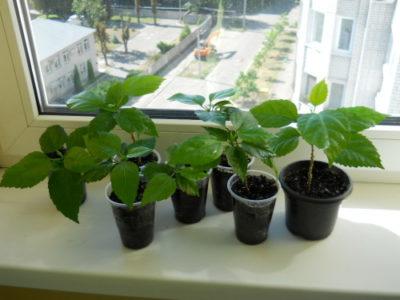

The plant is propagated to get another one for decorating the windowsill if:
- It's great.
- One of its branches bent close to the ground, which makes it capable of reproduction by layers.
- It has grown enough to split a bush or cut a stalk.
When choosing a suitable breeding method for a Chinese rose, they focus primarily on the season.... In other cases, reproduction is abandoned until better times.
This is especially true of cases when the grower, seeing spots on the leaves and noticing small insects, still cuts off the stalk and tries to propagate it. His efforts will not be crowned with success. First you need to treat it, wait until it is completely restored, and then multiply it.
Pruning and pinching hibiscus
Trimming and shaping are important components. While pruning sounds controversial, it does promote new growth and cause more blossoms to appear. There are several pruning methods, but they all work by cutting the branches above the node (joint) at an angle from the center of the bush. This will send a signal to the plant to grow more branches in that location. If any part of your hibiscus dies, you must make corrective pruning and prune it. This will remove the unsightly part of the plant and may even cause it to grow back from scratch. Never break more than ⅔ of one branch at a time, as this can harm the hibiscus more than it helps.
What is meant by pinching? You pinch the growing tip to make more branches grow from the nodes below. And of course, more branches will eventually lead to more flowering, which looks like it works on a plant of any size. You can pinch the cuttings at different heights.If you don't pinch, the hibiscus will just keep growing without the side branches. So, this practice is also applicable when caring for your favorite plant. After such procedures, the flowers become larger.
Photo
For more photos of hibiscus, see below:
Diseases and pests of hibiscus
The plant needs proper care. You will be able to identify hibiscus diseases and treat ailments at home. A number of nasty pests of hibiscus plants find the plant irresistible. A common problem with hibiscus is aphids: pests that suck sap from foliage are commonly found on the plant. Pest control is carried out using insecticidal soap.
White flies are small pests that suck on juices, usually from the underside of leaves. Insecticidal soap or sticky fly traps will help.
Thrips are small pests that lay their eggs inside hibiscus buds, often causing the buds to collapse before flowering.
Mealybugs are sap-sucking pests covered with a protective, waxy mass. Insecticidal soap is used.
Ants do not directly harm hibiscus, but they eat beneficial insects that protect against aphids and other pests. Avoid spraying that kills the ants while they are actively working. It is necessary to water with a solution of foundation when all else fails. When the threat is over, the plant will revive.
Possible problems and difficulties
After breeding, the Chinese rose needs care. It must be watered regularly, monitored for air humidity and the absence of drafts. Sometimes the lack of proper care leads to the shedding of foliage by the young plant.
To prevent aphids and spider mites from appearing, the seedlings are treated with special preparations, the stems and leaves are washed under a warm shower or wiped with soapy water. If hibiscus leaves turn yellow after reproduction, it lacks iron and nitrogen, but there is too much chlorine and calcium.
Syrian hibiscus photo
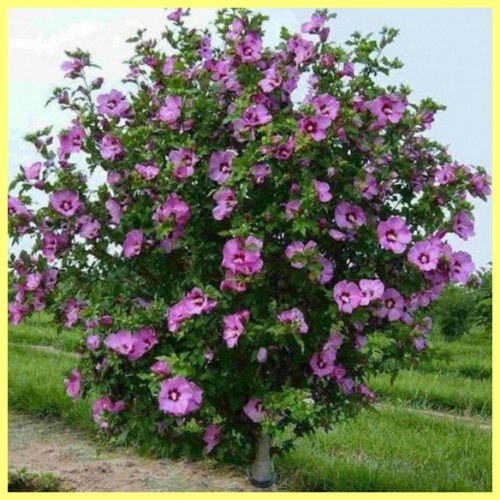

This flower blooms almost all year round. Has evergreen leaves and flowers of different shades. It can be grown indoors or in the garden. One flower has a diameter of 7 to 12 centimeters. In appearance, Hibiscus flowers resemble mallow. The flower lives only one day.
Syrian Hibiscus can be of several varieties:
Hibiscus Totus Albus
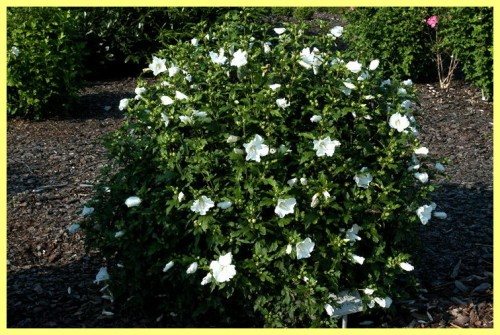

Has snow-white flowers;
Hibiscus Monstrosus
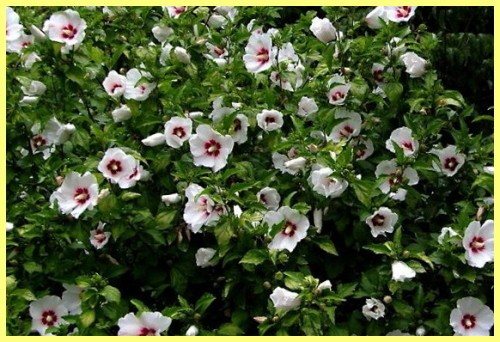

It blooms with white flowers all spring and autumn;
Hibiscus William R. Smith
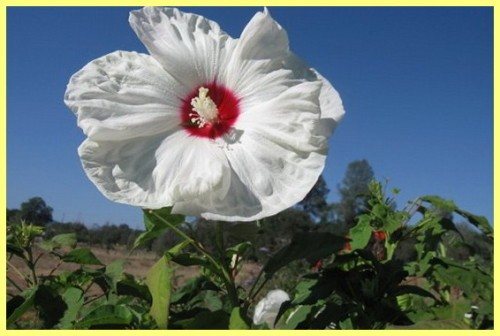

This variety has white flowers with a red center;
Hibiscus Woodbridge
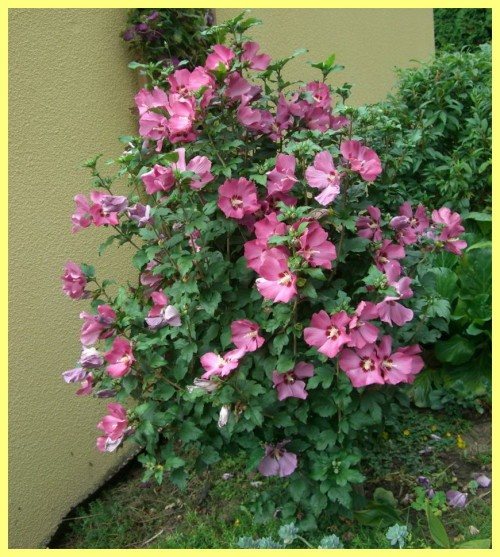

It blooms in red with a ruby tint;
Hibiscus Blue Bird
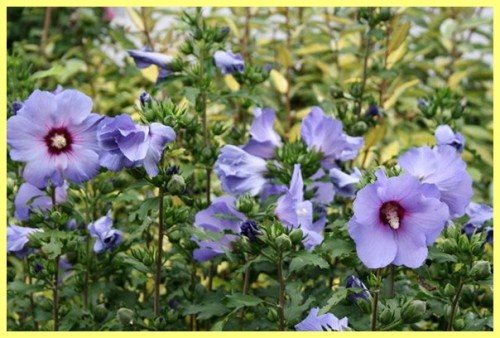

Has flowers of a blue or purple hue. The flower can be blue-violet;
Hibiscus speciosus
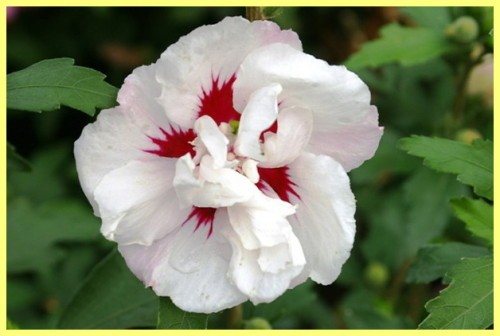

It has double flowers, the shade of each flower is white, and its middle is dark red;
Jeanne d'Arc hibiscus
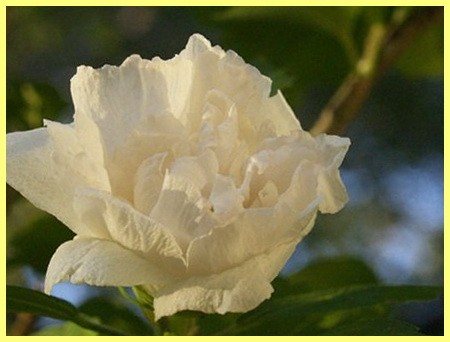

It blooms with yellow-white flowers;
Hibiscus Due de Brabant
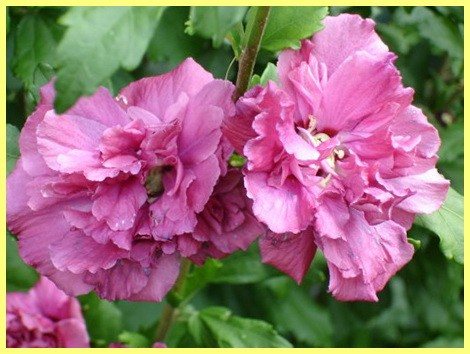

Has double flowers of dark red color, they may have white stripes;
Hibiscus Ardens
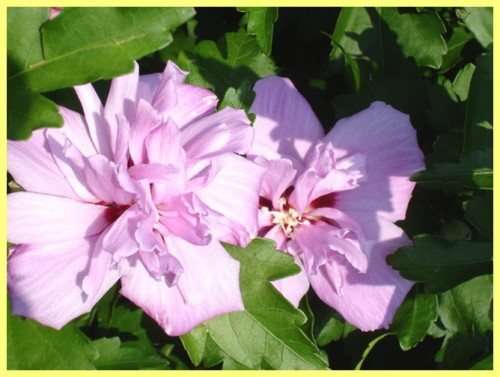

It has flowers of pink and purple hues.
When choosing a type of Syrian hibiscus, consider your region. Plants with double flowers love warm and mild climate. Do not put such a flower on the balcony in early spring. He will die from the low temperature.
Soil preparation and site selection
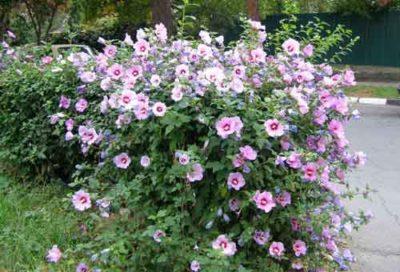

Land.
For sowing seeds and rooting a cuttings of garden hibiscus, a peat-based substrate is suitable:- a mixture of peat and moss - sphagnum;
a mixture of peat and perlite;
- a mixture of garden soil, peat, coarse sand in equal proportions.
- A place.
The best place for garden hibiscus on the site is partial shade, it does not tolerate direct bright sunlight. But you cannot plant it in absolute shade. Also, the place must be protected from drafts.
Growing hibiscus outdoors also requires light and permeable soil rich in organic matter. For example, sod, leafy soil, humus, coarse sand in a ratio of 2: 2: 1: 1. Alternatively: 5% perlite, 45% hardwood bark, 50% peat.
Distinctive features of some types of hibiscus
Plants of different varieties differ in appearance and flowering time:
| Varieties | Chinese | Dissected | Variegated | Edible (okra) | Sour |
| Leaf color | Dark green with a glossy top surface | Green shiny | Green with a shiny top | Dark or light green | green |
| Leaf shape | Oval with scalloped edge | Oval, jagged edges | Heart-shaped rounded | Five - seven-bladed | Oval |
| Flowers diameter | 12-16 cm | 5-8cm | 6-7 cm | 12 cm | 6-10 cm |
| Color of flowers | From yellow and pink to orange and fiery red | Red orange | Yellow at the edges and crimson at the base | Yellowish cream | Purplish reds, pinks, or yellows |
| Flowering time | From early spring to late autumn | From spring to late autumn | From early spring to late autumn | From spring to late autumn | June-September |
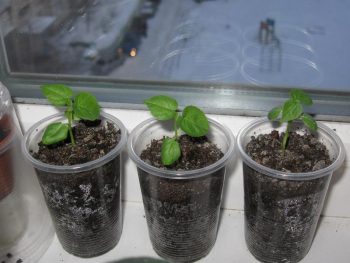

When the cuttings grow, they can be transplanted into full-fledged pots.
Soil preparation for hibiscus
To transplant a grown stalk, you need to properly prepare the soil. It is best to buy citrus soil and add vermiculite and coarse sand to it. If this is not possible, you can prepare the soil yourself. To do this, take:
- Three parts of turf land.
- The same amount of leafy land.
- Some of the humus.
- Part of the sand.
- Part of the charcoal.
Tip # 2. If all the proportions are met, then excellent conditions for further successful growth will be created for the hibiscus, and most likely there will be no problems with this.
Hibiscus how to grow full-fledged plants from seeds
The plant reproduces well by seeds. Growing it from seed is easier than propagating it by cuttings. Cuttings do not always take root and require more attention than seeds. How to grow hibiscus from seed?
Choose the type of plant you want. You can buy it in the shops "Everything for Dacha", from grandmothers in the market or in a flower stall. It is convenient to grow plants in a wooden box. You select its size based on the required number of young animals.
As a soil, a universal mixture for indoor plants is suitable. It is poured into a box, leveled. Water the soil abundantly before sowing the seeds. The seeds are sown in a pre-prepared furrow. According to the principle of sowing, the process resembles that on a garden bed.
Seeds should not be sprinkled deeply with earth. Otherwise, the sprouts may not break through the ground cover.
Cover the box with seeds with foil or glass and place in a warm place. But, do not forget that it needs to be regularly ventilated. Ideally 1-2 times a day. It is worth watering the room with a plant sprayer, but not with a cup. It's better for the plants.
As soon as the sprouts hatch out of the ground, the glass is removed from the box. Now the plants need fresh air. Individual plants that overtake others in growth are planted in small pots or glasses. Thus, from one box, you can get up to 50 pieces of new plants. Considering that hibiscus is not whimsical to care for, it can be successfully sold.
Sowing preparation
Non-double hibiscus is suitable as a mother plant
Freshly harvested hibiscus seeds do not require scarification. They already have excellent germination. For scarification of seeds, the following method is used: a small container is lined with sandpaper. The seeds are placed in a container and covered with a lid. Then you need to shake the container for a few minutes. As a result of this procedure, the seed coat is scratched. When soaked, these hibiscus seeds will swell and germinate faster. Hibiscus seeds are soaked in the following solutions: - 1 teaspoon of honey and 1 teaspoon of aloe juice are taken for one glass of water; - four drops of zircon preparation are taken for one liter of water. The seeds are soaked for three to five hours.
What do hibiscus plants need to bloom?
In order for the plants to throw out flowers in the summer, they need to start feeding them from mid-March: every week - one feeding.For a more efficient assimilation of fertilizers by plants, they need to be alternated: once use organic fertilizers, on the other - mineral fertilizers, then organic again, etc.
Do not transplant hibiscus into spacious pots: like many other flowers, hibiscus react surprisingly to the size of the container in which they grow - the larger the pot, the smaller the flowers, and vice versa. If all the conditions are met, then in the middle of summer it will be possible to see the buds that have appeared. Hibiscus blooms for a long time. While the first flowers have faded, others will already open nearby and this process is repeated many times over several weeks.
After the hibiscus has completely bloomed, the seeds can be seen. Inexperienced growers use them for flower cultivation. But this is a mistake: if the plant has not been pollinated, the seeds will be unusable. But, even if everything is fine with pollination, there is no guarantee that the seedlings will have the characteristics of the mother plant.
In addition, to grow seedlings, you need to know some of the features of this process, have certain skills, so it is best to do cuttings: it is much easier and will definitely give a good result.
Advice
Experienced gardeners have learned the following lessons from this story:
- For reproduction, you need to take only ripe branches, since green ones are weaker and can simply rot.
- The cut must be treated with a root-forming preparation.
- In the room, you always need to maintain the temperature within the range from +17 to +27 degrees.
- The mixture for planting young plants should be nutritious, light and loose.
- To ensure high humidity, it is imperative to make improvised mini-greenhouses.
Cuttings can be carried out year-round, but if this is done in winter, it will take more time for rooting, due to the low activity of vegetative processes. But it is best to grow cuttings in April-May, since this is the most favorable period for this.
What is the best method of grafting for yourself?
The information below will help to understand this issue:
| Indicators | Germinating roots in water | Germination in soil | Growing seedlings |
| Complexity | Easily | Average difficulty | Complicated |
| Percentage of obtaining new plants | 80-90% | 85-95% | 60-70% |
| Blooming time | Next year | Next year | In the fourth year |
| What species are best to breed | Simple | Simple | Varietal |
| Time spending | July August | March, April | Fall |
What the Chinese rose loves - we select a favorable place in the house
Rule number 1 - hibiscus is a light-loving plant, so when choosing a suitable place, pay attention to this. Create a soft, diffused light by covering the windowsill with reflective foil. Remember, a short daylight hours slows down the growth of the plant, inhibits flowering and blooming of new flowers. When choosing a sunny window sill, also keep in mind that hibiscus does not like tight spaces, in indoor conditions the plant grows to 1–1.5m high. Considering this, choose a spacious pot for the Chinese rose.
Since hibiscus grows well in conditions close to tropical conditions, temperature and humidity play an important role. Optimal temperature conditions for growth in summer are 20–22 ° С, and in winter - 14–16 ° С. If you keep a flower in warmer conditions in winter, hibiscus bloom is possible. On the one hand, this is not bad for you, but a dormant period (November – February) is necessary for the plant. Therefore, try to create conditions for it close to the specified temperature and observe moderate watering.
The Chinese rose loves high humidity. Spray the plant regularly with a spray bottle without touching the flowers, humidify the air. Place several bowls of water or a special humidifier around the hibiscus.Remember, dry air not only slows down the growth of a plant, but also provokes the appearance of insect pests, for example, a spider mite, and with it a fungus.
Growing
The exactingness of the plant extends only to the amount of vital moisture. For the rest, the culture is surprisingly unpretentious, and anyone can grow it, because swamp hibiscus can feel great in a pot on a balcony, loggia or in an apartment, although it was initially focused on cultivation in the open field.
An ideal place for planting hibiscus is a damp, swampy or well-lit area with slightly acidic or neutral soils located near a reservoir, well-lit by the sun. Partial shading of the area is also possible. In this case, the foliage will be thicker and larger, and the flowering will be slightly poorer.
Selection of material for propagation
Not everyone knows how to root a hibiscus from a cutting competently, but the further development of the plant depends on the choice and preparation of planting material. A few valuable tips will help you get it right. You need to choose shoots for reproduction immediately after the flowering of the Chinese rose. If manipulations are performed during the most beautiful period for the plant, this will make it weak. It will direct all its strength to heal the cut sites, and the hibiscus at this time needs nutrients to form buds. It is necessary to cut off branches only from the middle part of the bush. You should carefully examine the plant and select shoots that have already become covered with woody skin. With the help of a knife, sections of about 14-15 cm are cut from them. In order not to expose the bush to unnecessary trauma, an oblique cut is made. The cut off part must have at least three internodes.
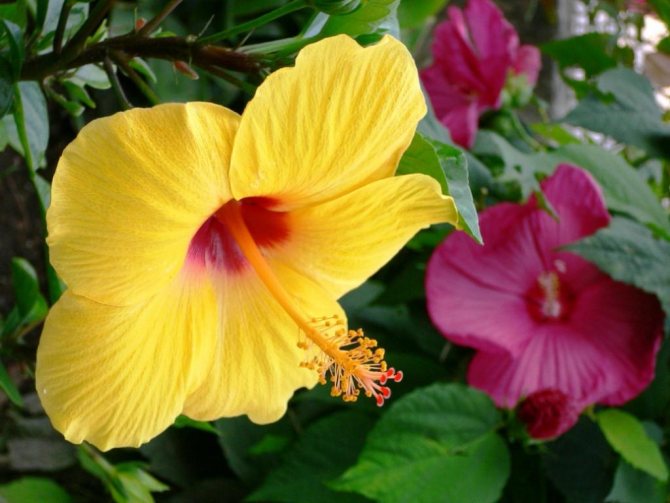

A few words about hibiscus
The Chinese rose is loved by flower growers in many countries. Some people note that hibiscus flowers are similar to mallow: they have one family. Large flowers can be simple or double. The flower genus is represented by 150 species.
Under natural conditions, the plant can be seen in China, Malaysia, on the islands of Japan, India. Residents of the young regions of Russia can also admire the thickets of flowering hibiscus in the wild or on the avenues of parks.
Since the wild ancestors of the flower live in warm countries, the plant at home needs to create comfortable conditions: in summer about +24 degrees, in winter at least +15 degrees.
Marsh hibiscus: planting and care. Photo
Before planting hibiscus in open ground, you need to take care of the preparation of the site. Dig a planting hole corresponding to the size of the root system of the seedling.
The top fertile soil layer is mixed with leaf compost or humus, which can be successfully replaced with 30-40 grams of complex mineral fertilizer. It is important to remember that overfeeding with nutrients is detrimental to a crop such as marsh hibiscus. Planting and caring for a plant involves a certain restraint in feeding: the lack of fertilizer is insignificant for it, while excessive fertilization will immediately affect the hibiscus with a noticeable loss of decorativeness. The best nutritional option for planting is still high-quality organic matter.
The pit is filled by a third with the prepared earthen mixture, pouring it with a slide, placing a seedling in it, spreading the roots along the embankment and filling it with earth, after which the soil is well compacted and generously watered with warm water. To avoid moisture loss, a small earthen roller is arranged around the seedling to retain water. During the week, the seedling is watered daily. This will minimize the stress of planting and help it take root faster. The first two winters, the young plant is covered for the winter, using special materials, roofing material or spruce branches. A young shrub blooms for the first time in the 3-4th year.
Hibiscus indoor video
For the successful cultivation of garden herbaceous hibiscus from seeds, it is necessary first of all to process the seeds before sowing so that they, after processing, can form a plant and bloom in the first season. In early summer or in March, it is necessary to soak the seeds using one of the stimulant solutions: zircon, epin, humate, potatin or fumar. The chemical must be dissolved in boiled water strictly according to the instructions, which are usually written on the package. To soak 20 seeds, two tablespoons of the solution are enough, so do not rush to dissolve the entire chemical, because it has a short shelf life in a diluted form. Before soaking, you can bubble the seeds, for this you can use a wooden spoon to add some water with the seeds for about two or three minutes, this will help remove the protective layer from the hibiscus seeds. After these types of seed treatments, it is advisable to germinate the hibiscus seeds on a damp cloth or gauze. To prevent the napkin from drying out quickly, you need to place it with the seeds in an open plastic bag. And it is advisable to put the bag in a warm place. So the bag must be kept for 3 - 4 days. When most of the seeds hatch, they must be sown in fertile, moist soil. It is better to immediately sow in separate containers. Fill the containers with a peat mixture with ash and sand. Sow into planting holes with a depth equal to two diameters of the seed. Cover with a glass cover or glass to create a microclimate with high humidity and warmth. Non-germinated seeds can be refrigerated for 10 days for additional stratification and then sown in the same way. Seedlings of hibiscus appear in seven days. For the prevention of blackleg, it is recommended to treat the soil with a foundation. Watering the seedlings is not very abundant. It is recommended to keep seedlings in a well-lit place, darkened from direct sunlight. With the arrival of spring, the sprouts must be accustomed to fresh air and direct sun gradually. Slowly increasing the period of exposure to the sun. The seedling hardening period lasts about 15 days. It is recommended to choose a sunny place for hibiscus, the earthen lump on the roots cannot be destroyed during transplantation. It should be planted in open ground at intervals of 25 - 45 cm between specimens. At night with frost, experts advise covering it with a box or cap. In the first year, it is necessary to plant seedlings in rows, for easier shelter from frost with a film. Planting hibiscus is recommended in the first year not to mulch with sawdust, straw or grass. Since they use up the nitrogen available in the ground by re-cooking, therefore, the plants will slow down in development. But from the second year of growing season, you can already mulch with a layer of five centimeters. In the process of growing hibiscus, the foliage sometimes begins to turn yellow, then it is advisable to spray the flower with iron in a chelated form. From pests, it is sometimes recommended to spill the soil with a foundation, since hibiscus often suffers from the attack of leaf beetles and caterpillars. To stimulate the early flowering of hibiscus, it is necessary to feed on a leaf in the evening, so the flowers will be brighter and larger. Hibiscus needs moisture and nutritious soil for favorable growth and development. Water for irrigation should not be chlorinated and limed, it is better to acidify it. For the winter period, it is best to cover and huddle hibiscus in the area of \ u200b \ u200bthe roots. It is necessary to huddle with sand, humus or garden soil. Reproduction by dividing the bush is best done starting from the third year of the growing season in spring or autumn.
Pollination
Terry hibiscus varieties are less likely to set seeds, therefore, to obtain hibiscus from seeds, it is better to choose a non-double hibiscus plant as the mother plant. A cotton pad is taken for pollination. Gently three of them flower dust. The fleece should turn yellow with pollen.
Collect pollen carefully
For pollination we need a sponge
Then, with this disc, we carefully blot the pistil of the hibiscus that we have chosen as the mother plant.
Pollinating hibiscus
How to form a crown
Before grafting, you need to decide if the hibiscus will be a tree or a bush. If you are forming a standard tree of the same variety, then inoculate the buds from different trunks. At the same time, remove all growth points from it. The stem of the stock for the stem should be high by growing to a certain height without pinching the main shoot.
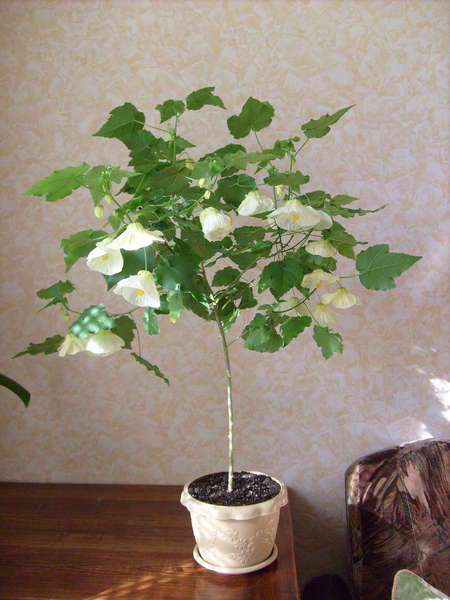

When a bush of one variety is formed, the buds for grafting are placed closer to the base of the bush so that the trunk does not become exposed. When grafting several varieties, you can see a variety of colors when blooming on one plant in the spring-autumn period and even in winter with additional lighting. In this case, it is necessary to remove all own growth points from the rootstock below the grafting, and the skeletal branches above the grafting should be shortened by half before the grafting procedure. When it becomes noticeable that the budding was carried out successfully, the branches are pruned again, otherwise they can drown out the growth of the grafted eyes. At the same time, the grafted hibiscus is fertilized after the development of full-fledged leaves from the bud.
It's important to know. Hibiscus with a smooth and straight stem are suitable for propagation by cuttings. Hibiscuses with poor root growth are grafted for reproduction.
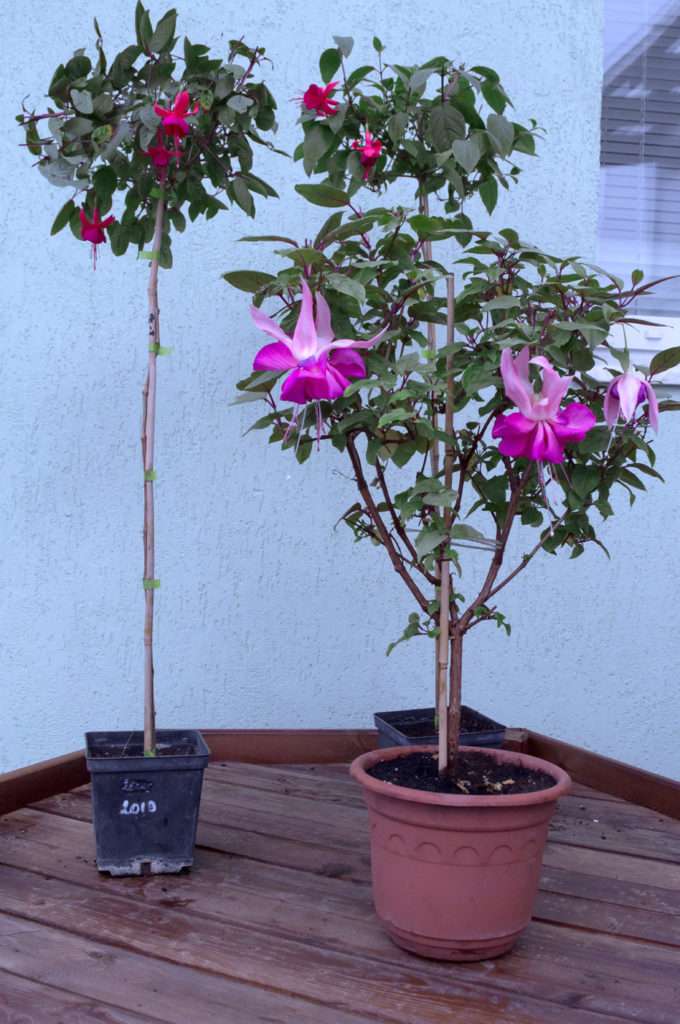

A few tips:
- It is better to plant plants in spring, they can dry out in summer.
- Do not cut the buds of variegated hibiscus for use on a rootstock with green leaves. This is a waste of time.
- Dutch hibiscus buds are not used as a scion. They will not take root, since the plants are overfeed with growth-suppressing drugs. The hibiscus is first transplanted into fresh soil, the shoots are cut in half. Growth suppressants stop working after 1-1.5 years. By that time, the plant is overgrown with new shoots, from which it is already possible to cut off the eyes as a scion.
- The plant is not fed for 3-4 weeks before budding.
- After processing hibiscus with an agent such as Athlete to control growth, they cannot be used for 3-4 months as a graft or rootstock.
Hibiscus beneficial properties and contraindications
The hibiscus plant is not a simple indoor flower. It can be used for cooking and added to tea. What are the beneficial properties and contraindications of Hibiscus?
Useful properties of hibiscus
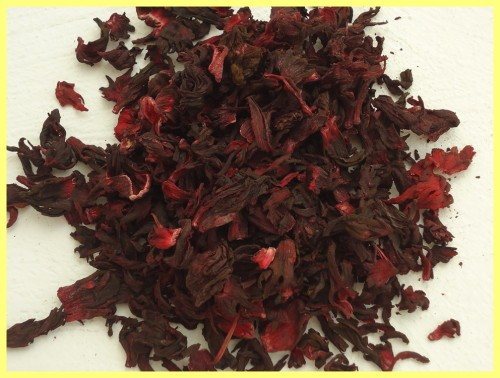

Hibiscus flowers are actively used for the treatment and prevention of many diseases. These are mainly gastrointestinal diseases, skin diseases, dysentery and hemorrhoids. Flavonoids are a part of hibiscus leaves. They remove toxins and harmful substances from the body. Eating the leaves and flowers of the plant can activate the body's metabolism. As a result, it will lead to natural weight loss.
Hibiscus should be added to the diet for the prevention and treatment of worms. Decoctions and tea from Hibiscus kills the larvae and eggs of worms, removes them from the body. Hibiscus is used to stimulate the production of bile, cleanse the liver of harmful substances. It helps to increase metabolism.
Hibiscus flowers are used as a diuretic and choleretic. They can be used as a remedy for inflammation and seizures. The flowers of the plant can also be used as a means of stopping blood.
The inflorescences of Hibiscus contain citric, malic and ascorbic acid. They can be taken by people with kidney problems. Hibiscus tea can be drunk to prevent kidney stones. You can drink this tea to strengthen the immune system.
In winter, you will be less sick with the flu and will not catch a viral infection. Broths and infusions are drunk as a prophylactic remedy for colds. Fresh hibiscus flowers can be applied to wounds, abscesses and tumors. When ground up, they can be useful in the treatment of malignant tumors.
Young men and women can use the plant to treat inflammation of the skin and acne. In the form of lotions, flowers are used to prevent and treat eczema and other skin diseases.
Contraindications to the use of hibiscus
In fact, there are not many of them. Hibiscus should not be consumed by people with high stomach acidity. It is not used by those who have problems with the duodenum, stomach ulcers. It is not advisable to take decoctions for pregnant women and nursing mothers. Children under one year old are also prohibited from using Hibiscus.
Care advice
In order for a young plant obtained from a cuttings to fully develop and grow, it is important for it to create comfortable living conditions. This implies compliance with the following requirements:
- sufficient illumination;
- optimal temperature conditions;
- sufficient air humidity;
- timely watering;
- top dressing;
- prevention of pests and diseases.
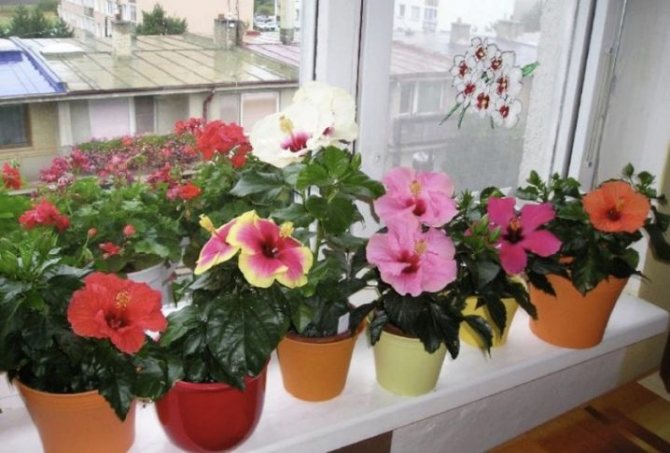

Lighting
After rooting, young hibiscus is placed in a well-lit place (on a windowsill, a heated balcony), while excluding direct sunlight on its leaves. Moderate diffused light is considered the most comfortable for these delicate exotics.
Given that hibiscuses always stretch towards the sun, the plant pot should be rotated regularly. This will allow the crown to develop evenly and proportionally.
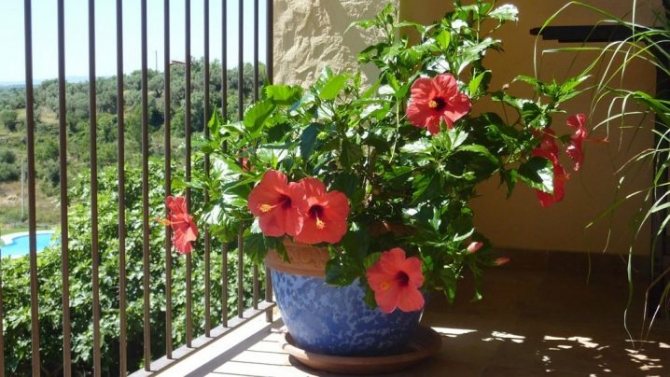

Temperature regime
Tropical origin causes increased temperature requirements for hibiscus. Best of all, these exotics feel at a stable air temperature of about 21 ° in summer and 15 ° in winter. Changes in temperature, cold snap and drafts are detrimental to these plants, since they cause a sharp decrease in their immunity and, as a result, the development of diseases.
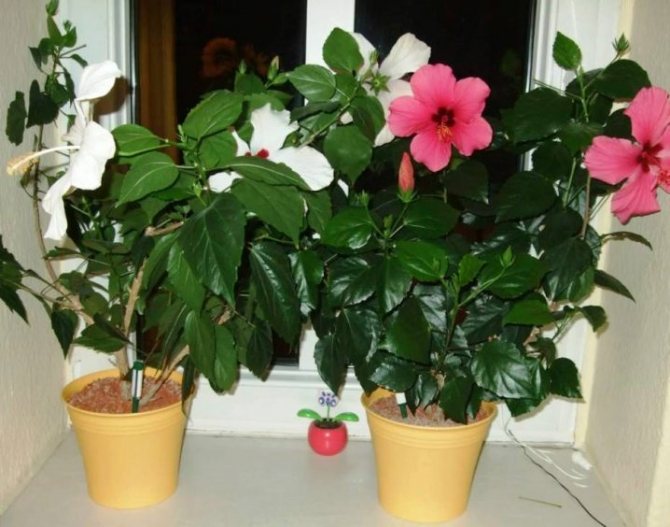

Sufficient air humidity
The tropics and subtropics are zones in which high humidity constantly reigns. It is necessary for rooting cuttings, for young and adult plants. For hibiscus to feel comfortable, it needs regular spraying. When carrying out this procedure, it is important to ensure that no water gets on the buds and flowers that are forming. Household humidifiers, as well as wide containers of water installed next to the pots, will provide constant air humidity.
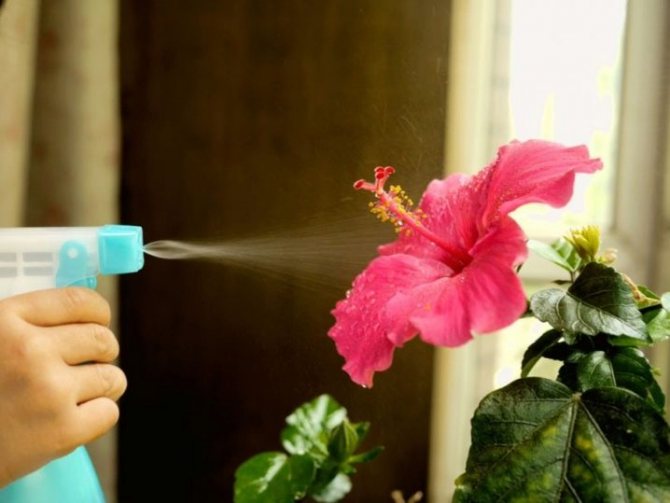

Timely watering
Typical of the tropics, hibiscus does not tolerate drought. It is necessary to water it regularly, making sure that the soil mixture in the pot does not dry out. However, an excess of moisture in the substrate must not be allowed, otherwise it can cause root rot.
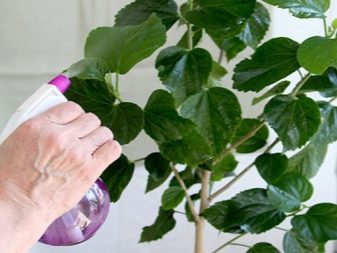

Top dressing
Young plants that have entered the phase of active growth and development require a lot of resources. To give them additional strength, top dressing is used.
If you cannot find special fertilizer for hibiscus on sale, you can feed the plants with nitroammophos (6–7 grams per 1 liter of water) or Biohumus.
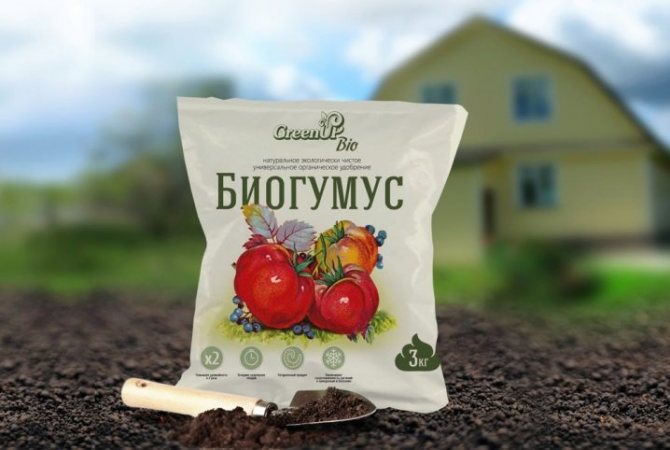

Prevention of pests and diseases
It is very important to protect young plants grown from cuttings from diseases and pests. For prevention purposes, young hibiscus are regularly examined, and newly acquired plants are temporarily isolated from the rest. Both the store substrate and the components of the soil mixture for do-it-yourself preparation should be checked.
Often, poor-quality soil becomes a source of plant infection.
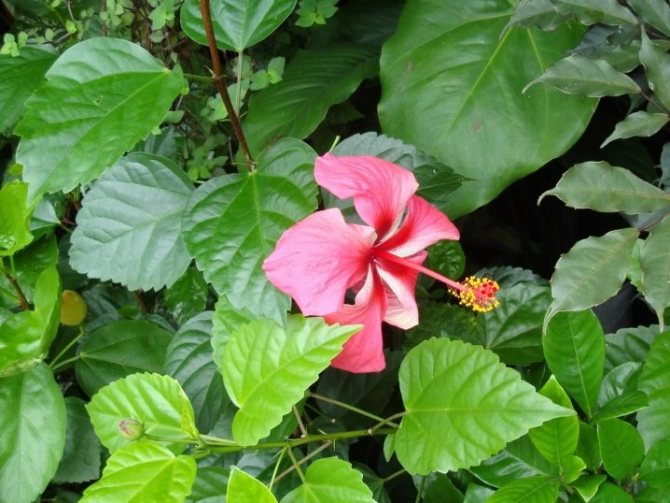

When is the best time to propagate?
Cutting is considered the only breeding method for hibiscus that can be used at any time of the year. Even if the plant is in a dormant phase, its cuttings will root perfectly when favorable conditions are created.
At the same time, experienced florists recommend using this method from April to August, when the flower is actively developing and growing. The best month for propagation by cuttings in this regard is May. At this time, plant resources are maximally mobilized, and metabolic processes are most intense. Taken together, all these factors determine the good survival rate and rooting of cuttings.
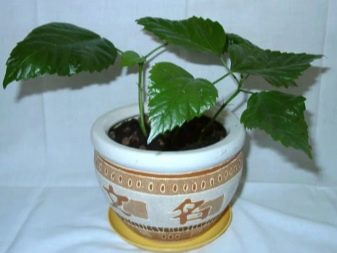

If cuttings are carried out in winter, the rooting process will be slightly slower. This is primarily due to the fact that this period is characterized by a short daylight hours, as a result of which the planting material will not be able to receive a sufficient amount of illumination.
To compensate for the lack of light, rooting cuttings are supplemented with phytolamps or fluorescent lamps.
In addition, when rooting cuttings in winter, it is necessary to provide them with suitable temperature conditions. If the room is cool, the rooting process will slow down significantly.
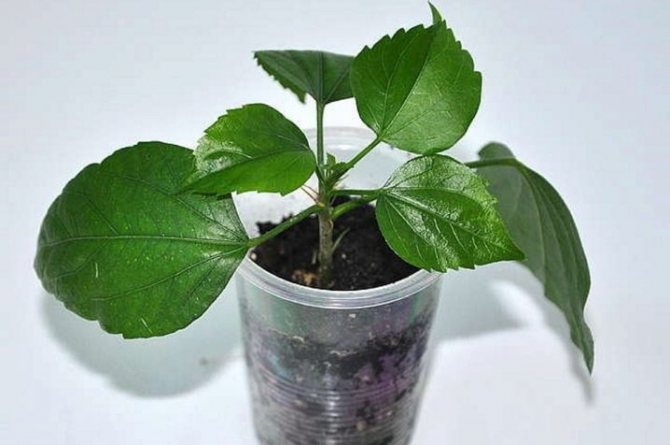

Not every indoor hibiscus is suitable for cuttings. To obtain a healthy and viable planting material, the donor plant must meet the following requirements:
- suitable age;
- well-developed crown;
- absence of diseases and traces of damage by pests.
Very young hibiscus are not recommended for use as donors, as cutting off cuttings can weaken their immune system. It is best to take cuttings from an adult and sturdy plant.
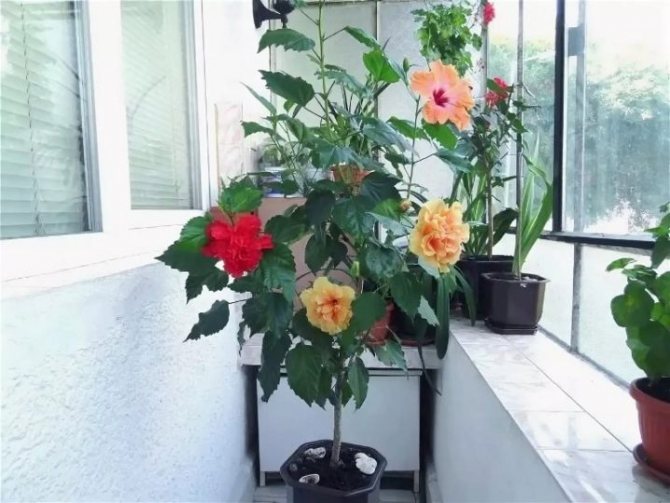

Hibiscus with a poorly developed crown are also not considered the most suitable donors. If by a certain age the plant has not managed to build up a sufficient green mass, this may indicate its weakening and insufficient potential for reproduction.
A prerequisite that must be met by a hibiscus donor is absolute health. Sick plants and plants that have recently undergone any disease are not used to obtain cuttings. It is also not allowed to use as donors and hibiscus affected by the invasion of pests. In these cases, the plants must first be thoroughly treated and given the opportunity to fully recover.
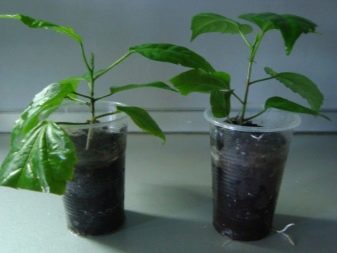

One of the indisputable advantages of propagation of hibiscus by cuttings is that this method allows you to preserve all the varietal properties of the plant. This means that if, for example, a florist decides to propagate variegated hibiscus with double flowers by cuttings, he will receive young plants from the planting material with the same characteristics as the source.
Among other advantages of the grafting method, flower growers also note that with this method of propagation, plants with a well-developed root system are obtained. Such a result is rarely achieved, for example, by growing hibiscus from seeds.
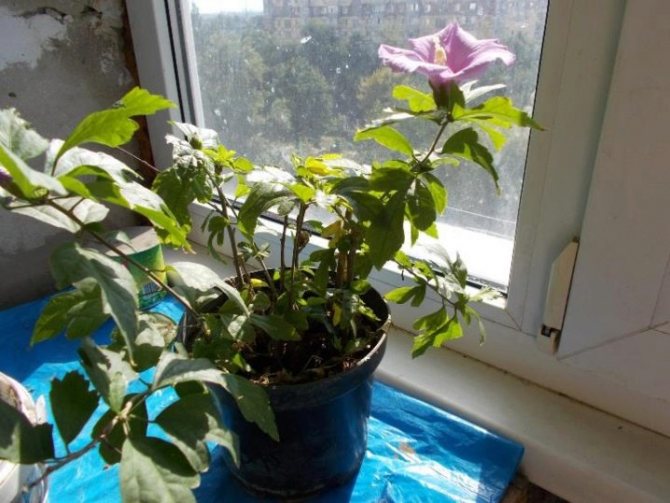

Why doesn't hibiscus bloom?
Sometimes all the efforts of the breeder remain fruitless, and the hibiscus stands "naked" for months. Flowers do not appear, and the plant's only decorative effect is the lush growth of its foliage. However, if it is in good condition, all is not lost. One of the reasons why the Chinese rose does not bloom is to ignore decorative pruning.
What factors are important for a plant to bloom?
- High-quality soil composition;
- Regular soil moisture;
- Adding top dressing to the substrate;
- The correct mode of keeping in the winter season;
- Adequate lighting.
We offer you to familiarize yourself with: Purslane growing from seeds when to plant seeds for seedlings Purslane planting and care photos
If the flower pot is in a room where the air temperature is cool, budding may stop. Sometimes already set buds fall on the soil, and this is a direct signal that the plant is uncomfortable. Hibiscus loves warmth (not heat!) And can hardly tolerate temperature changes. It is impossible for drafts to "walk" in the room. Sometimes eliminating this factor is enough to make the rose bloom.
When the hibiscus has nevertheless formed small flower ovaries, do not under any circumstances turn or rearrange the pot.The peduncle has a fragile base, and at the slightest touch, it can fall off.
Flowering begins only if the Chinese rose is healthy and in a comfortable environment. If the foliage turns yellow or becomes stained, this indicates that the plant has a disease or infection with typical pests. The yellow color of the leaf plate signals problems with the root system, which is either waterlogged or lacks watering.
A light gray sticky coating on the leaves indicates the presence of gray mold or powdery mildew. It must be cleaned with a soft sponge, the plant itself is bathed in a warm shower and then treated with a fungicide.
Planting capacity requirements
The Chinese rose is unpretentious, frost-resistant. The seeds are planted in standard cups or small pots per piece. The most important requirement for a container is the ability to pass liquid. It is impossible that water accumulates on the bottom of the container after watering, this leads to rotting of the seeds. Suitable container capacity is 0.5 l. Do not take pots that are too high, in which the hibiscus root system will not develop correctly.
Most specialty cups and pots have holes to drain excess liquid. If there are no holes in the container, you should make them yourself.
Varieties
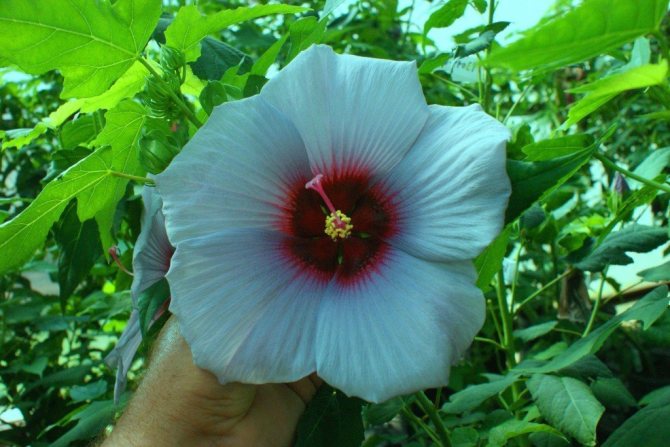

In the Malvov family, which include hibiscus, there are over three hundred species. The most popular ones are:
- Syrian hibiscus (ketmia);
- Dissected
- Triple;
- Drummond Hibiscus;
- Chinese;
- Volatile;
- Hybrid;
- Swamp;
- Sour;
- Hibiscus Arnotti;
- Hawaiian;
- Spread out;
- Variegated;
- Tall;
- Okra;
- Fragile;
- Kaili;
- Variegated;
- Hugel's hibiscus;
- Pandora-like;
- Volatile;
- Sabdariff;
- Sparkling;
- Lipoid.
For growing at home, only some of the listed species are used. Let's decide on how to breed a plant.
How to care for the first time?
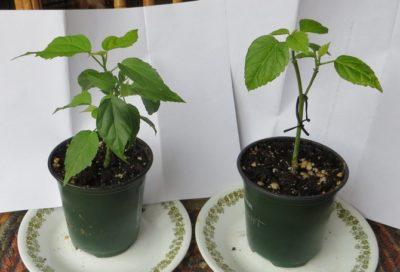

Care for a hibiscus that has been transplanted into a permanent container after rooting should be the same as for an adult plant.
- Hibiscus is a light-loving plant. It is preferable to put it near a window or in another well-lit place.
- Recommended temperature in summer - + 20C - + 22C, in winter - + 14C - + 16C.
- It is necessary to systematically spray the plant to maintain the high level of humidity so necessary for hibiscus. Also, the humidity can be increased by using a container with water next to the plant.
When spraying from a spray bottle, make sure that no water gets on the flowers, otherwise they may become stained and fall off. - The flower loves abundant watering. It should be carried out with settled water at room temperature. The plant should be watered as the top layer of the soil dries out. In winter, the frequency of watering can be reduced.
- You can fertilize with a solution of water and nitroammofoska (5 - 10 g per 1 liter of water), complex fertilizers from a flower shop (for example, "Biohumus") are also suitable.
What if the plant does not take root?
It often happens that the rooted stalk after transplantation begins to wither, shed leaves and hurt. This signals that its root system is weak or damaged. In this case, grafting should be repeated, since such specimens are rarely viable.
Often, young plants obtained by rooting cuttings become victims of pathogens or pests. Some growers attribute this to the fact that many young hibiscus sometimes lack the strength (immunity) to resist the invasion of parasites. In this case, it is necessary to diagnose the problem in a timely and accurate manner, and then carry out competent and comprehensive treatment.
Compliance with the rules of care can significantly increase the chances of plant survival after rooting.Combined with the care of the grower for green pets, complete care will ensure their healthy development and abundant flowering.
For information on how to properly carry out cuttings of hibiscus, see the video below.
One hundred percent rooting of hibiscus cuttings ...
First you need to fill the peat tablet with warm boiled water. The composition of the mixture contains everything you need for fast and healthy root growth.
While the tablet is swelling, prepare the stalk: make a neat cut at 40 degrees, dry it and sprinkle with Kornevin.
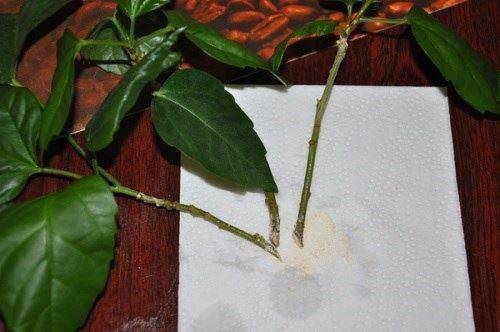

When the tablet has taken shape, it is better to squeeze it out of the water a little. For better rooting and convenience, free the filling from the mesh, add additional vermiculite to the resulting mixture and stir.
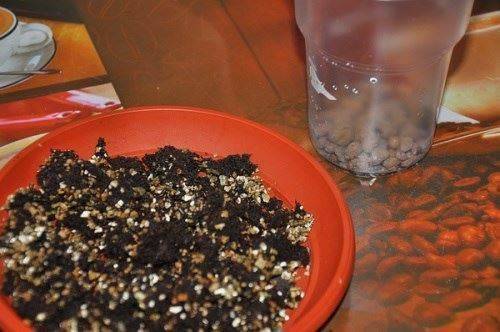

Place drain stones on the bottom of a plastic cup. Then pour the resulting soil and plant the hibiscus stalk to a depth of 2-2.5 cm. If the leaves on the stem are too large and wide, they can be shortened slightly with scissors.
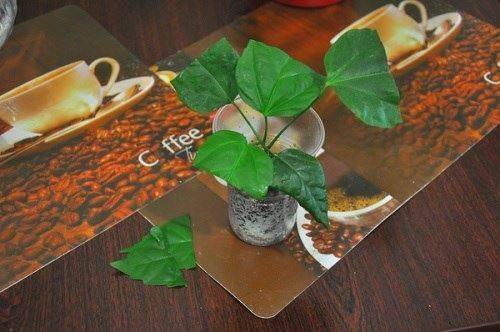

Wrap the glass with the plant in a plastic bag and put it in a lighted place. You need to air it no more often than once every two to three weeks, add as the soil dries.
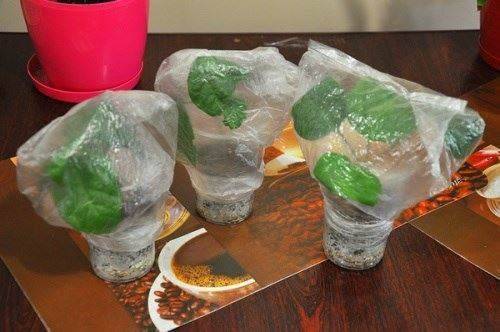

Approximately after 2-3 months, small roots should appear, which can be seen through the transparent walls of the glass. When they are strong enough, transplant the plant into a pot.
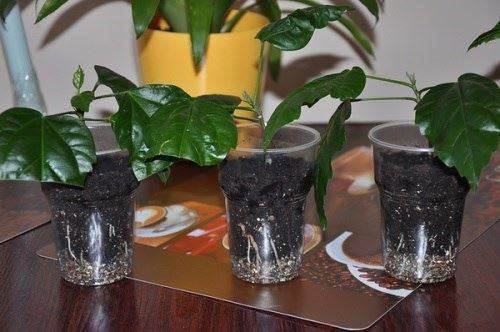

Don't be surprised if a young hibiscus starts to bloom right away. This is almost always the case. But don't be discouraged if he can't stand them. The ambitions of a young plant usually do not match their capabilities. But when the grown hibiscus reaches 25-30 cm, it may well please with the first beautiful flower.
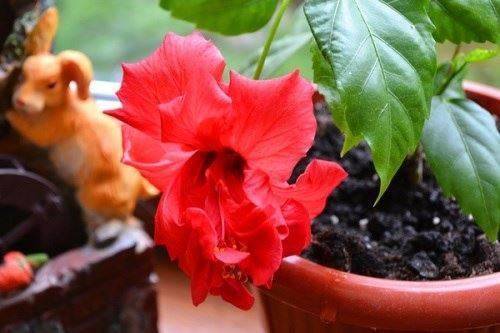

The period of active growth of home hibiscus is spring-summer. Cuttings for rooting are advised to be cut in September-October from a healthy adult plant. In this case, by summer time you will already have a charming flowering Chinese rose bush. Good luck!
See "All About Caring for Indoor Hibiscus"
What you need to know about grafting
You can propagate an indoor flower in different ways:
- seeds;
- dividing the rhizome;
- by cuttings.
Each method is interesting in its own way, it has difficulties. Unfortunately, it is not always possible to get a new plant due to the whims of homemade hibiscus. It should be noted that the seed method of reproduction, in contrast to the division of the rhizome and cuttings, does not always preserve the parental qualities of the plant.
It is for this reason that the propagation of hibiscus by cuttings is most often used. Although they do not always take root safely.
Material preparation
First you need to prepare high-quality planting material - cuttings. For this, a semi-lignified shoot from a healthy plant is used. Green shoots are not suitable for these purposes, as they rot. Often white "pulp" is formed on them. These are the air buds of the root system.
For cutting, you need to use a sharp knife, previously disinfected. The cut on the handle should be oblique. It can be 10 to 15 cm long with two or three leaflets and several internodes.
The upper part of the cutting is cut at right angles to the base of the stem. The lowest leaves must be removed. The remaining leaf blades should be cut off by a third.
After the performed procedures, the stalk is placed in the lower part in a solution of epin or another root-forming drug.
Video "Cutting hibiscus"
Methods for obtaining plants from cuttings
To root cuttings of a Chinese rose, you can use the following methods:
- in a container with water;
- directly in a pot of soil;
- using a peat tablet.
We will now consider the features of work in each specific case.
Rooting in water
A high capacity is selected, water is poured at room temperature. If tap water is used, then it must be defended to release chlorine.Some growers add activated carbon or bone meal for the fastest development of the root system.
- It is better to take the container from dark glass.
- A plastic bag is put on top of the installed handle, and the bottom is fixed with an elastic band to create comfortable conditions. You can use a wide-mouth glass jar to cover.
- From time to time, the covering material must be removed in order to shake off the accumulated moisture. Then put it back in place. Excess moisture leads to rotting of the cuttings.
- A certain temperature of about +24 degrees is also maintained.
- The root system appears in about a month. Transplanting a Chinese rose to a permanent place is allowed when the roots reach five centimeters. Hibiscus with longer roots take root less well or die altogether.
Planting the petiole in the ground
The pot is prepared in advance. It must be rinsed with water in which laundry soap is dissolved. After that, pour over with boiling water. When choosing a pot (200-500 ml), take into account the size of the seedlings.
The bottom of the pot is covered with drainage. Broken fired brick, some sand and charcoal will do.
To root cuttings, you can use purchased potting soil (add sand on top) or prepare it yourself. It should be loose, water and air permeable.
If the composition is prepared independently, then it should consist of
| 1 part | leaf land |
| 1 part | turf land |
| 2 parts | sand |
Rinse the sand thoroughly with running water. The earth is poured with boiling water with dissolved potassium permanganate.
More than half the volume is poured into the container, on top - sand two centimeters. Roots begin to form in wet sand. As they grow, they creep into the depths of the pot.
It is better to choose the warmest place, cover the handle on top with a glass jar. Watering is carried out as the topsoil dries up. The greenhouse effect accelerates root formation.
Rooting usually occurs after two months. After that, the new hibiscus plant is planted in a permanent place.
Planting a cuttings with a peat tablet
Some growers prefer to propagate the Chinese rose using a peat tablet. Get yourself in advance:
- Plastic cups with a volume of 300 ml.
- Tablets with a diameter of at least 40 mm.
- Expanded clay as drainage.
- Any stimulant for the growth of the root system.
- Natural soil cultivators - vermiculite or perlite.
- Cellophane bag.
Reproduction by cuttings of a Chinese rose using a peat tablet is considered by many indoor flower lovers to be the most effective method. Due to the balance of the composition with the necessary substances and microelements, the root system develops safely.
- Pour the tablet with pre-boiled and chilled water. It will take some time for it to swell completely.
- The stalk is cut off, slightly dried and treated with a prepared root growth stimulant.
- Excess liquid is removed from their tablets, verlimut is added, the composition is mixed.
- A plastic cup is filled with drainage, the resulting soil is poured on top.
- You need to deepen the cutting by 2 or 2.5 cm. If the leaves are too large, cut them off with scissors.
- A plastic bag is put on top of the handle. You need to hold the glass in the light, but the rays of the sun should not fall on it.
- The bag is removed for ventilation every 2 weeks. Watering - as needed.
Roots appear after 2 or 3 months. Their development can be easily tracked through a transparent cup. Transplanting to a new place is possible when the root system grows well.
Instead of a conclusion
If you create the necessary conditions for indoor hibiscus after breeding, then soon it will release buds and bloom. There is nothing surprising. But the flower does not last long, falls off. Real flowering begins on hibiscus when it grows up to 30 centimeters.
Substrate preparation
We figured out how to root cuttings of indoor hibiscus. Next, let's move on to preparing the soil, in which the flower will grow constantly. It would be nice to get a special composition for citrus crops, add a little sand and vermiculite to it. You can prepare the substrate yourself. For this purpose, it is necessary to take: three parts each of leafy and soddy soil, one each - humus, charcoal and sand. If these proportions are observed, hibiscuses usually develop well, get sick less and live longer.
The Chinese rose feels as comfortable as possible in peat soil. Experienced growers advise adding sphagnum moss to it to regulate humidity.
How to avoid mistakes when growing hibiscus?
When starting any new business, ignorance of some of the subtleties can negate all the work and efforts. This happens especially often when growing flowers. What mistakes are most often made by novice florists and gardeners?
| Act | What's happening | Than threatens |
| Poor drainage | The soil is waterlogged | The roots will rot |
| Use of cold, not settled water | Chlorine and salts will enter the soil | The plant will hurt, grow poorly |
| Long-term growth without replacing soil | Lack of required components | Suspended growth, no flowering, leaf shedding |
| Lack of lighting | Lack of chlorophyll | Leaves turn yellow and then fall off |
| Incorrect fertilization | An excess or insufficient amount of microelements and vitamins necessary for growth | The plant may die. Moreover, in both cases. |
In addition, you need to ensure that there is no dust on the leaves and flowers. It should also be remembered that not only the lack of light, but also its excess, this flower does not really like, especially while the bush is still young. The plant may die in a draft or in a dry, hot room.
This usually happens in city apartments in winter: centralized heating dries up the air, and since the batteries are located under the window, the flower dries up even more. To prevent this, you need to often spray the flower, arranging a shower for it. But all this - in moderation, what will happen with waterlogging - is described above.
If you provide the flowers with favorable conditions, you can admire and admire their flowering from March to mid-November. Any mistake will definitely affect the appearance and quality of flowering.
Important conditions for the procedure
There are two options for how to root hibiscus from a cuttings: in water and potting soil. When using the first method, it is imperative to regularly moisten the soil. If you ignore this condition, then in an insufficiently moist substrate, the shoots will not give root shoots. Regardless of which method you choose, it is recommended to create a greenhouse effect for future seedlings. You can cover the container with cuttings with glass or make a cap out of plastic wrap for this purpose. To avoid their decay, it is necessary to air the so-called greenhouse. The optimum moisture level in the substrate will help maintain the sphagnum moss. With the appearance of the first few root shoots, the young plant must be placed in a more nutritious soil, where it will continue to develop. In this case, the upper two or three sheets need to be cut off a little, and a few lower ones should be removed.
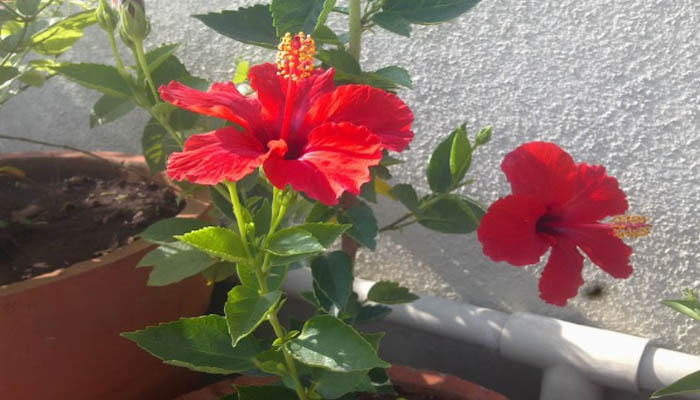

How to propagate a hibiscus flower: methods
The Chinese rose is demanding on the choice of the place of growth, therefore it is important to provide the shrub with enough light, but at the same time protect it from direct sunlight.
If this is not done, burns may appear on the foliage. Drafts are generally unacceptable - they destroy the plant and too low temperatures.
Despite the exactingness of hibiscus, there are not so few methods for planting it, these include those indicated in the table.
| Seeds | The method requires special skill and is recommended only for experienced gardeners to use it. |
| Dividing the bush | To do this, it is enough to divide an adult shrub into parts so that each has a root. |
| Layers | By digging in a branch for its subsequent rooting. |
| Cuttings | The most common method, even a novice gardener can handle it. |
With both young seedlings and mature plants, it is important not to forget that Hibiscus is very picky about watering in the summer. By autumn, the amount of moisture should be reduced, and in the cold season - reduced to a minimum.
It is important to prevent the earthen coma from drying out, as this can adversely affect flowering and lead to foliage falling.
Best time to breed
The choice of the season depends on the breeding method. So, the sowing of seeds is carried out from January to March. During winter and spring, seedlings will grow, gain strength, and strengthen. In open ground, seedlings are planted in mid-May. Cuttings are cut from April to August.
The most favorable month is May: the plant is full of vitality, is actively developing, the air temperature is quite high, but there is still no summer heat, plenty of soft sunlight. Over the summer, the seedlings will be able to take root and get stronger.
From the history of the plant
A native of comfortable subtropical and tropical latitudes, marsh hibiscus, or herbal, has taken root well in domestic gardens. Fully consistent with its name, as in its homeland, this perennial shrub grows rapidly, blooms luxuriantly and beautifully, if it is provided with the necessary conditions - good moisture and protected from the wind, sunny area. The special attitude to generous watering in these crops caused the emergence of another, very popular name, often used by gardeners - marsh mallow.
Types of hibiscus and their distinctive features
Although hibiscus plants prefer to grow in tropical climates, they can be grown in many regions of the country if measures are taken to protect them from severe frosts. In areas with warm, without snowy winters, there are usually no special problems with the cultivation of these exotic beauties. But this applies to garden species, but indoor and greenhouse varieties can be grown everywhere, even in the far north, if proper conditions are provided.
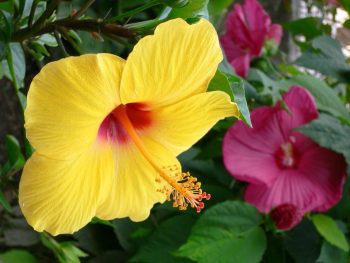

Today, hibiscus of various types can be seen among gardeners and florists. Some of them are common, others are extremely rare.
Popular hibiscus species include:
- Chinese, which is also called the Chinese rose. Common varieties are Rosa, Florida, Anita Buis, Hamburg. Plants differ in color of flowers, size, degree of terry.
- Okra or Edible Hibiscus. Common varieties are White cylindrical, Ladies fingers, Velvet and others.
- Syrian. This is the only variety of this flower that is suitable for growing in the garden. The plant blooms 3-4 years after planting.
- Triple. It can grow up to a meter in height. Flowers stay on the plant for a long time - up to a month. They are not open all the time, but only for a day.
- Drummond. It is distinguished by an unusual color of flowers - black in the center, and pink at the edges.
Planting material
To obtain cuttings with a high survival potential, a strong and healthy donor plant with a well-developed crown is chosen. It is desirable that the hibiscus does not bloom at this time. Experienced growers recommend cutting off the cuttings after the plant has completely faded.
For cutting, you need to prepare sharp and clean scissors, pruning shears or scalpel. Then a young and strong shoot with a slightly lignified stem should be found on the plant. The shoot should be about 15–18 centimeters long, with at least three internodes on it. Internodes are the gaps on the stem between the attachment points of the leaves.
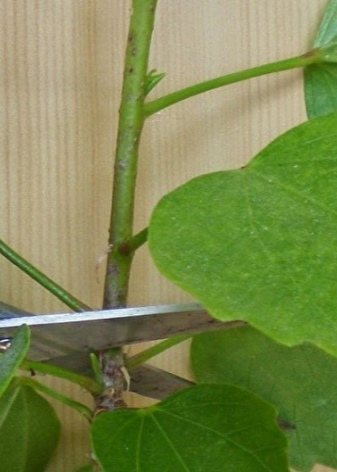

The selected shoot is cut obliquely, after which the lower leaves are removed from it. The upper leaves are cut in half to reduce the loss of evaporated moisture.The top of the shoot is shortened by cutting it at a right angle. Thus, the cutting will have an oblique cut at the bottom and a straight cut at the top.
After pruning, the stalk is placed in the lower part in a glass with a solution of a root growth stimulator. The most popular drug among flower growers used for these purposes is "Kornevin".
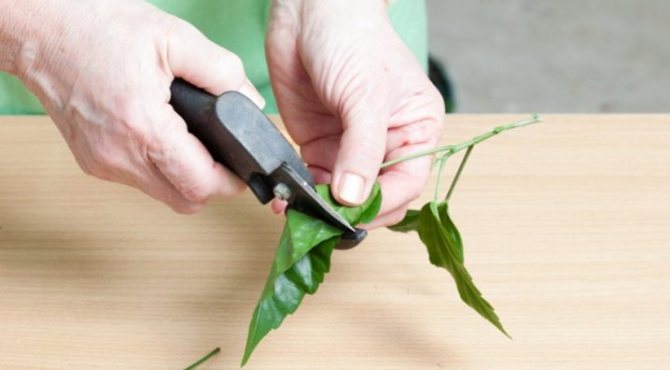

Care: what a gardener needs to know
The shrub successfully tolerates formative cuttings and maintains a given shape throughout the season, which is especially appreciated by garden designers. This procedure is carried out in late winter or early spring, before the onset of sap flow and swelling of the kidneys. Along with the formation of the crown, pruning is also of a sanitary nature: freed from sick, dried and thickening shoots, the plants develop better and more confidently, delighting gardeners with generous flowering.
Like many garden plants, hibiscus requires traditional maintenance, consisting of required watering, loosening the soil in the near-trunk circles to help aerate the roots, and periodic weeding.
How to care for a tree or herb in an open field?
How to grow hibiscus after planting in open ground so that it becomes a garden decoration? After the garden hibiscus has been planted on the site, it needs to be cared for as an adult plant. Systematic loosening of the topsoil, removal of weeds, regular watering (in hot and dry summers, watering should be daily) - this is what the plant needs.
Twice a month, from June to September, garden hibiscus needs to be fed with fertilizers that are high in nitrogen and phosphorus., and in the fall - fertilizers with potassium. Do not forget about regularly pruning the plant. Read about spring garden hibiscus pruning here.
Method for correct sowing of seeds
Hibiscus can be propagated by seeds, cuttings and cuttings, i.e. dividing the bush.
Seeds
Hibiscus flowers form pods that contain the seed. When ripe, the pods open and the seeds fall to the ground, where they germinate with ease. In order to plant healthy seeds in the right place, they must first be collected, as with planting and caring for ageratum.
Seed collection:
- The ripeness of the pods is determined by their brown color.
- Before harvesting, the plant bush must be lined with paper bags or bags. This will prevent the seeds from scattering on the ground after the pods have opened.
- Empty the bag periodically.
When buying seeds, you need to pay attention to the description and photo of the plant variety.
Indoor hibiscus is an unassuming plant. The bush grows quickly and is not capricious. If you give it bright lighting, sprinkle it occasionally and remember to water it, it may even bloom as a token of gratitude at inopportune hours.
Some growers claim that indoor hibiscus is not sensitive to air humidity. And they also advise to regularly spray the plant. Like any plant of the subtropics, the Chinese rose loves moisture, but not excessive. Observe the rule: the higher the temperature, the higher the humidity, and, conversely, at low temperatures, the lower the humidity. And carefully observe the state of the flower, he himself will tell you what he likes.
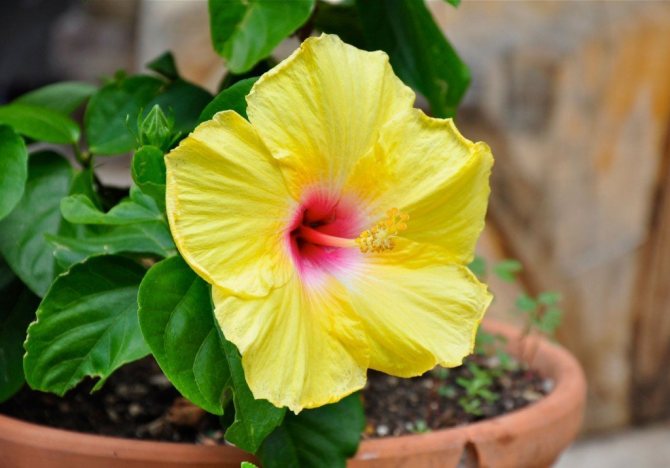

Hibiscus is an easy-care plant. He is not capricious in vain, content with regular watering and spraying (however, there are requirements for water quality), modest top dressing and sanitary pruning. I knew hibiscus, which grew in a room without a window, under completely artificial light.
I must say that hibiscus forgives the mistakes of the grower. The plant lends itself to resuscitation. The main thing is to notice in time that the flower is depressed, and to take action.
The Chinese rose is very sensitive to water quality. It should not be watered with hard and cool water. From this, the plant can get sick, shedding buds and even leaves. Tap water causes a disease - chlorosis.
If you want the hibiscus to be healthy, bloom and live for a long time, water it with demineralized soft and warm water. Defend it, filter and heat slightly if necessary. The same requirements for the spray water. In hot weather, it is useful to spray a Chinese rose twice a day. But try to keep large drops of moisture out of the flowers. They do not live long anyway, and water will shorten their life even more.
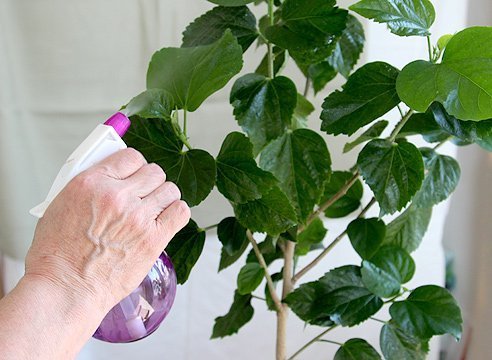

Hibiscus leaves are very fond of spraying.
Keep the soil in the hibiscus pot constantly moist. Drying out of the earthy coma can lead to leaf fall. In spring and summer, at the time of flowering, the plant needs to be watered abundantly. In winter, the amount and frequency of watering is reduced, but again it is dangerous to bring the earthen ball to complete dryness to the health of the hibiscus.
During the growth and laying of buds, be sure to support the Chinese rose with top dressing. Give her liquid mineral fertilizers with a high content of nitrogen, iron and copper two to three times a month in the spring (for greenery), and in the summer - phosphorus and potassium (for flowering). Prepare the solution according to the instructions. Some growers recommend once a month to fertilize hibiscus with fermented infusion of bird droppings, dilute it with water 1:20 and add it to the soil immediately after watering so as not to burn the roots. In winter, stop feeding or limit it once a month.
First of all, you should learn that hibiscus is a plant of southern origin, and therefore it is important to create conditions where it will be warm and light. On the southern window or near it, the flower is the place, although the plant perceives partial shade normally. The main thing is to choose the right light mode for it, since with a lack of lighting, the hibiscus stops blooming.
There are three main methods of reproduction in hibiscus:
- Seeds;
- Cuttings;
- Vaccination (indirect propagation, but we will include it in the list as an additional option).
Vaccination at home is not easy, therefore, the sexual reproduction method is more often used, that is, growing from seeds. Plants obtained by this method are well adapted and highly resistant.
Hibiscus can be grown from seeds at home in a relatively short time. Prepare the potting soil to begin the procedure. If there is no desire or opportunity to buy store-bought soil, the soil from the garden is taken as a basis, which is "diluted" with peat or humus. The resulting composition is sieved and calcined in the oven. It is then spilled with a hot manganese solution and left to cool.
If the seedlings have already been prepared by this time, feel free to start planting. If not, you need to germinate it, following the step-by-step instructions:
- Seeds are calibrated in shape and size and soaked in water for 1 - 2 days;
- The soaked grains are placed on damp cotton wool and germinated in a warm, shaded place;
- After the appearance of green shoots, the seeds are planted in small cups filled with prepared soil. They are poured into small grooves with a thin layer;
- Sprinkle the planting with earth. The container is placed in a place with a sufficiently high temperature. If you are planting seedlings in winter, you can place them right next to the radiator.
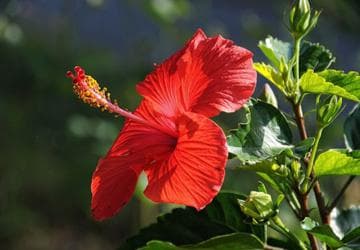

So that the earthy clod does not dry out, it is sprayed twice a day from a spray bottle. Helps to retain moisture and protective film. It is removed after pecking the shoots through the soil. After strengthening and gaining sufficient height, the seedlings are transplanted into separate pots. Leave only the strongest ones. To prevent the seedling from dying, the first bud is cut off.
Care and watering
Hibiscus is a southern inhabitant and requires abundant watering. Starting in spring, water the plant every 3 days; in summer, the procedure is repeated every other day. It is useful to spray foliage with a fine spray bottle. A regular warm shower will not hurt. In the winter season, the frequency of watering is gradually reduced, the root system will have enough moisture once every 5 to 7 days.
Since the plant develops actively and rather quickly, the transplant is carried out every 12 to 18 months.Use a larger pot each time, but do not forget to organize a thick layer of drainage at the bottom. Before transshipment, the branches are cut, and in young bushes they are shortened by half. The standard time for pruning is autumn. Blooming hibiscus is best not replanted.
We suggest that you familiarize yourself with: How to get rid of midges in indoor flowers
In the spring and until the beginning of autumn, the flower is fed with specialized mineral complexes. Occasionally, an organic top dressing based on a liquid mullein is introduced. Indispensable components for hibiscus are copper and iron chelate. Fertilizer can also be applied by spraying, that is, by foliar method.
Representatives of the Malvov family are able to decorate not only the interior, but also the exterior. For planting in open ground, garden or Syrian hibiscus is best suited. It is resistant to low temperatures, has a low structure and has a graceful uniform bush shape, which allows it to be used as the main element of the landscape. Garden hibiscus blooms for at least 2.5 months.
Planting performed according to the correct scheme is a guarantee that the plant will successfully develop in the selected area for at least two decades. Much depends on leaving, but we will focus on the initial stage. Hibiscus seedlings are planted in the spring, in the middle of the season, when the nighttime cold snap no longer leads to freezing of the soil.
Seedlings begin to breed 1.5 - 2 months in advance. Selected seeds are soaked in a solution with a growth stimulator. They are kept in this form for about a day. Then the seed is wrapped in damp gauze and placed in a plastic bag, which is tied with a strong knot. Ventilate the seeds once a day to keep them in the greenhouse but still get fresh air. The sprouts will hatch on about the fourth day.
The hibiscus seed is planted in a peat cup (one at a time), filled with universal soil. The seedlings are exposed to a light, cool place and moistened once a day. Do not forget to pour it with a foundation solution to protect it from the black leg.
Grown and strengthened seedlings, which have gained a height of at least 10 - 15 centimeters, can be moved into open ground. The hole should be about twice the size of the root system of the plant. The bottom of the hole is laid out with drainage. The hole itself is covered with a mixture of dug earth with sand and peat.
When planting a seedling, carefully sprinkle on the root collar (a layer of 1 - 2 cm is enough). The roots must completely occupy the space of the hole. The hibiscus hides, a trench is organized in the planting circle for irrigation. The soil can be mulched, and the trunk can be tied with spruce branches.
Caring for a flower growing on a site is simple. It is watered as a dry crust forms on the soil. Regular sanitary pruning is required to remove weak, diseased and dried out shoots. The soil around the tree must be loosened after each watering. In the summer months, hibiscus is fed with nitrogen-phosphorus complexes. In the fall, potassium-based preparations are introduced into the soil.
Propagated by seeds, you can immediately sow in open ground. Before that, it is advisable to prepare the soil in the selected area, taking into account the preferences and conditions of plant growth.
Soil composition
It is best to grow hibiscus in swampy areas sheltered from the wind. Organic matter is introduced into the soil. Rotted manure or compost is an excellent choice. The soil is thoroughly mixed with organic matter. So the plant will be provided with nutrients during the crucial period of development. Keep in mind that swamp hibiscus planted in nutrient soil can grow up to 2.5-3 meters in height.

